Specialized Stumpjumper 15
Wheel Sizes:
- Sizes S3-S6: 29” front & rear
- Sizes S1-S2: 29” front / 27.5” rear
Suspension Travel:
- Frame Travel: 145 mm
- Fork Travel:
- Stumpjumper 15: 150 mm (size S1 gets 140 mm fork; Coil builds get 160 mm front on all sizes)
- Stumpjumper 15 EVO: 160 mm (size S1 gets 150 mm fork)
Geometry Highlights:
- Sizes Offered: S1, S2, S3, S4, S5, S6
- Headtube Angle: 63° (Low), 64.5° (Mid), 65.5° (High),
- Reach: 475 mm (S4, Mid headset cup position)
- Chainstay Length: 435 mm (S4)
Frame Material: Carbon fiber and aluminum
Price (full build details below):
- Alloy complete bikes starting at $3,000 USD
- Alloy frameset: $2,300 USD
- Carbon complete bikes starting at $5,500 USD
- S-Works frameset: $3,500 USD
Blister's Measured Weight (Stumpjumper 15 Pro, S4, w/o pedals): 31.2 lbs / 14.15 kg
Test Location: Washington, British Columbia, & Colorado
Reviewers:
- Dylan Wood: 5’10.5", 160 lb / 179 cm, 72.5 kg
- David Golay: 6’, 160 lb / 183 cm, 72.6 kg
Test Duration: 10 months
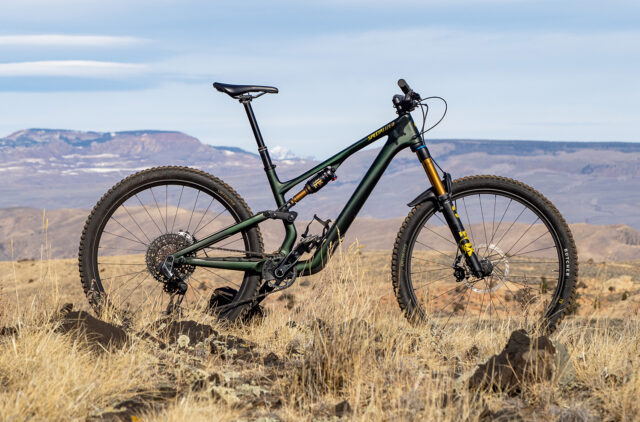
Intro
It’s hard to think of a more iconic bike lineage than the Specialized Stumpjumper. A chronological look at changes in the Stumpjumper’s design shows just how far mountain bikes have come in a relatively short while.
The prior-generation Stumpjumper had a fairly lengthy run, released in 2020 (MY2021). At least in the Pacific Northwest, the EVO version of that latest Stumpjumper seems to be on the back of every other truck in the parking lot, with geometry adjustments and a Goldilocks 150 rear travel / 160 front combination that worked well for a huge swath of riders.
For its 15th iteration, the Stumpjumper gets a revamped frame design, lots of geometry adjustments, and new suspension tech called GENIE. And, after being initially launched as a carbon-only model, Specialized has released a more affordable alloy-frame version. Read on for more on the overhauled classic.
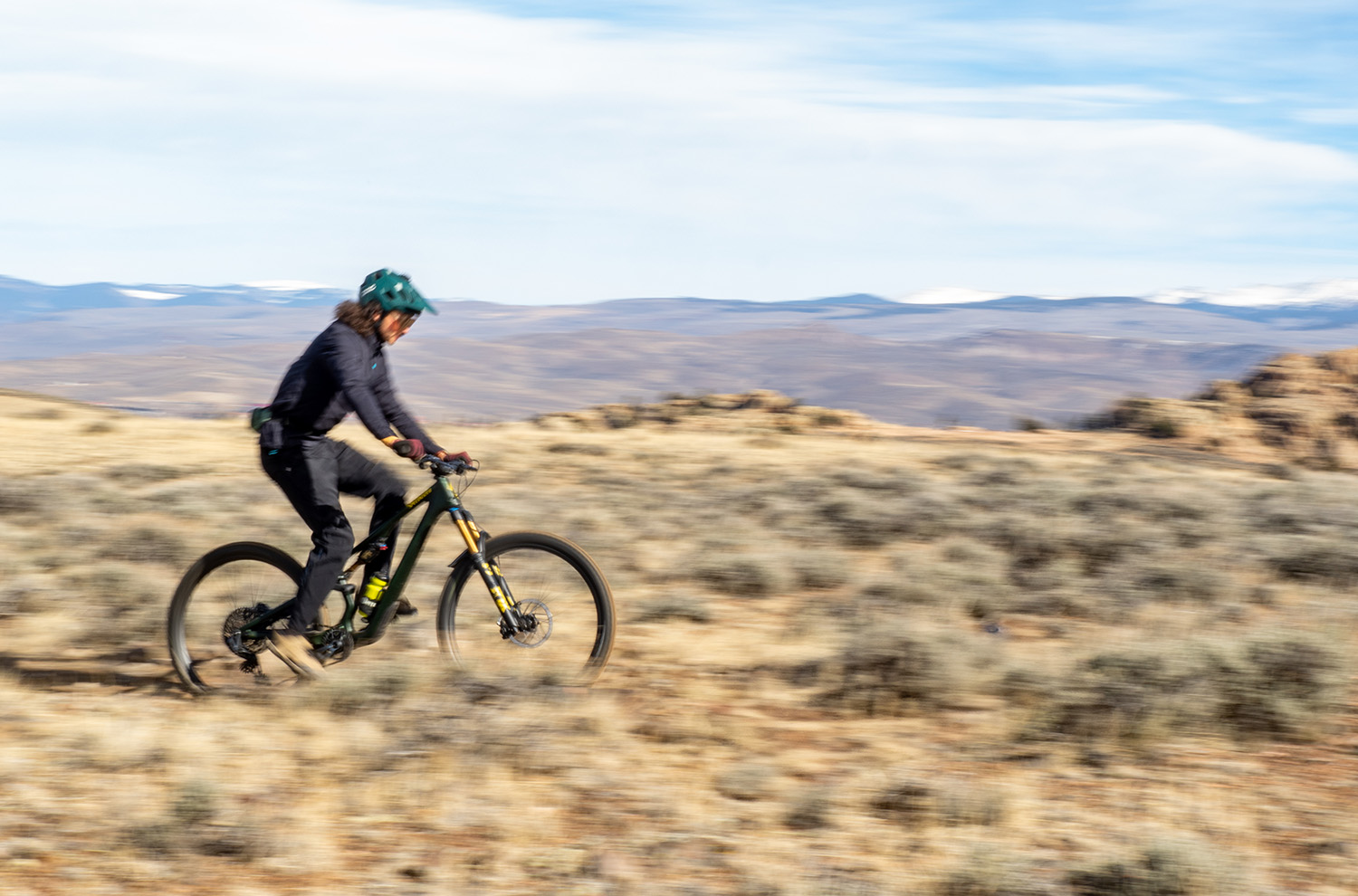
The Frame
Specialized’s new Stumpjumper 15 does away with the split between the Stumpjumper and Stumpjumper EVO, at least as far as the frame goes. Initially released as a carbon-only option made from Specialized’s FACT 11m material, Specialized is now offering the Stumpjumper 15 with an aluminum frame, too.
The Stumpjumper 15 launched without the EVO label; recently, Specialized added two new Stumpjumper 15 builds that feature a 160 mm travel fork and piggyback shock, which are branded as the Stumpjumper 15 EVO. Specialized says that all new builds going forward will be the beefed-up EVO spec, but the standard Stumpjumper builds are still available for the time being. The frame is unchanged between the two versions.
Though the suspension is still a four-bar layout with a yoke driving the shock, Specialized has made some changes to the kinematics. Anti-squat is now between the levels offered by the outgoing Stumpjumper and Stumpjumper EVO, at roughly 105% at sag before falling off to under 78% at bottom out. That’s not low by any means, but it’s also not as high as a number of other bikes in the Trail segment, and we’ll be curious to see what that means as far as the balance between responsive pedaling and rear wheel tracking under power.
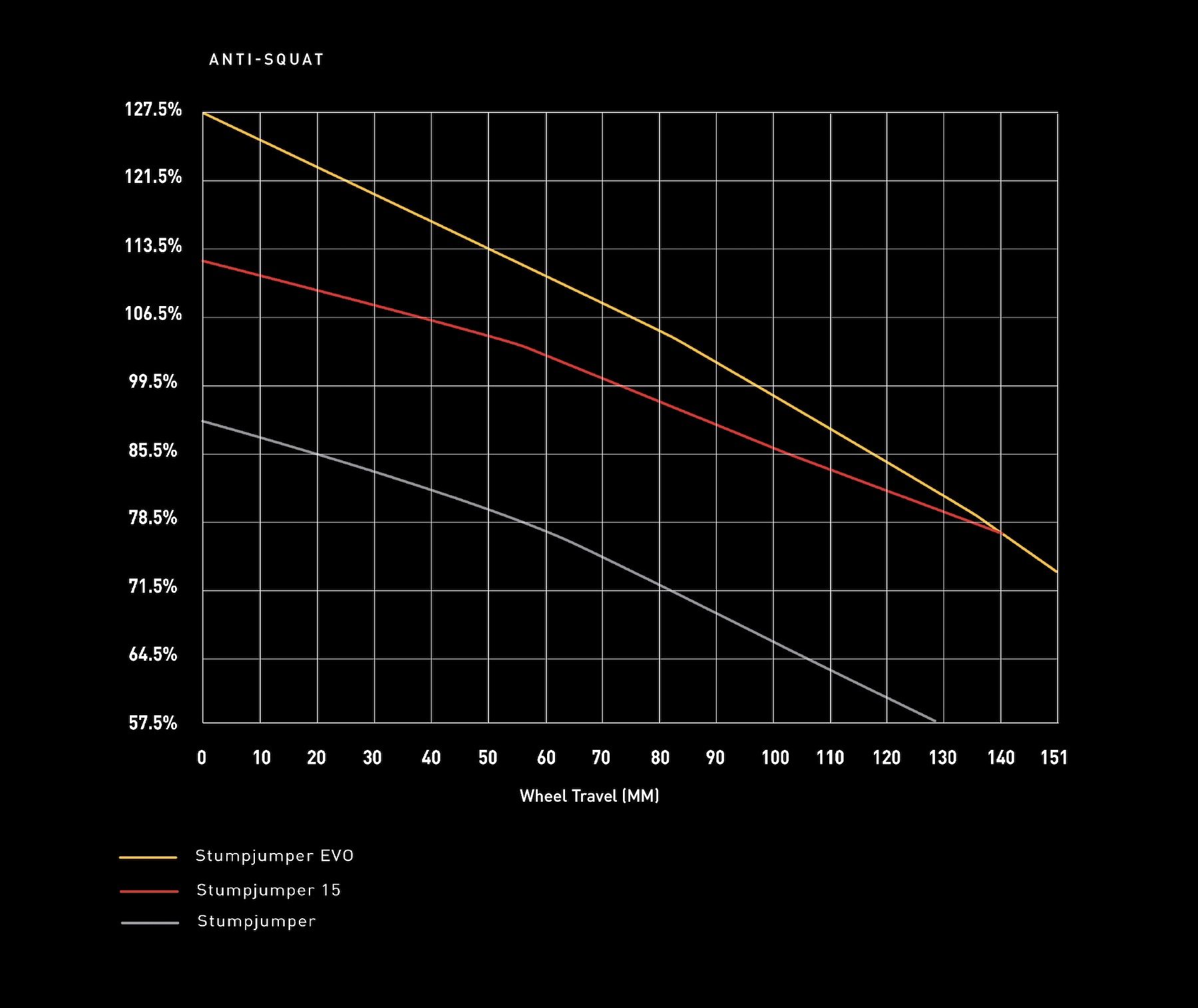
We’ll talk more about sizing down below, as the smallest S1 and S2 sizes get mixed wheels while larger sizes are full 29”, but it’s worth noting that all sizes of the new Stumpjumper are both 29” and mixed wheel compatible via a swappable link. Specialized is making those links available aftermarket so that riders can swap wheel size configurations as they see fit.
The SWAT box that is nearly ubiquitous on Specialized bikes gets updated as well to the 4.0 generation seen on the Epic 8. Specialized is offering lifetime replacement of pivot bearings for the original owner across all models — a nice feature for folks who plan to keep their Stumpjumper for the long haul.
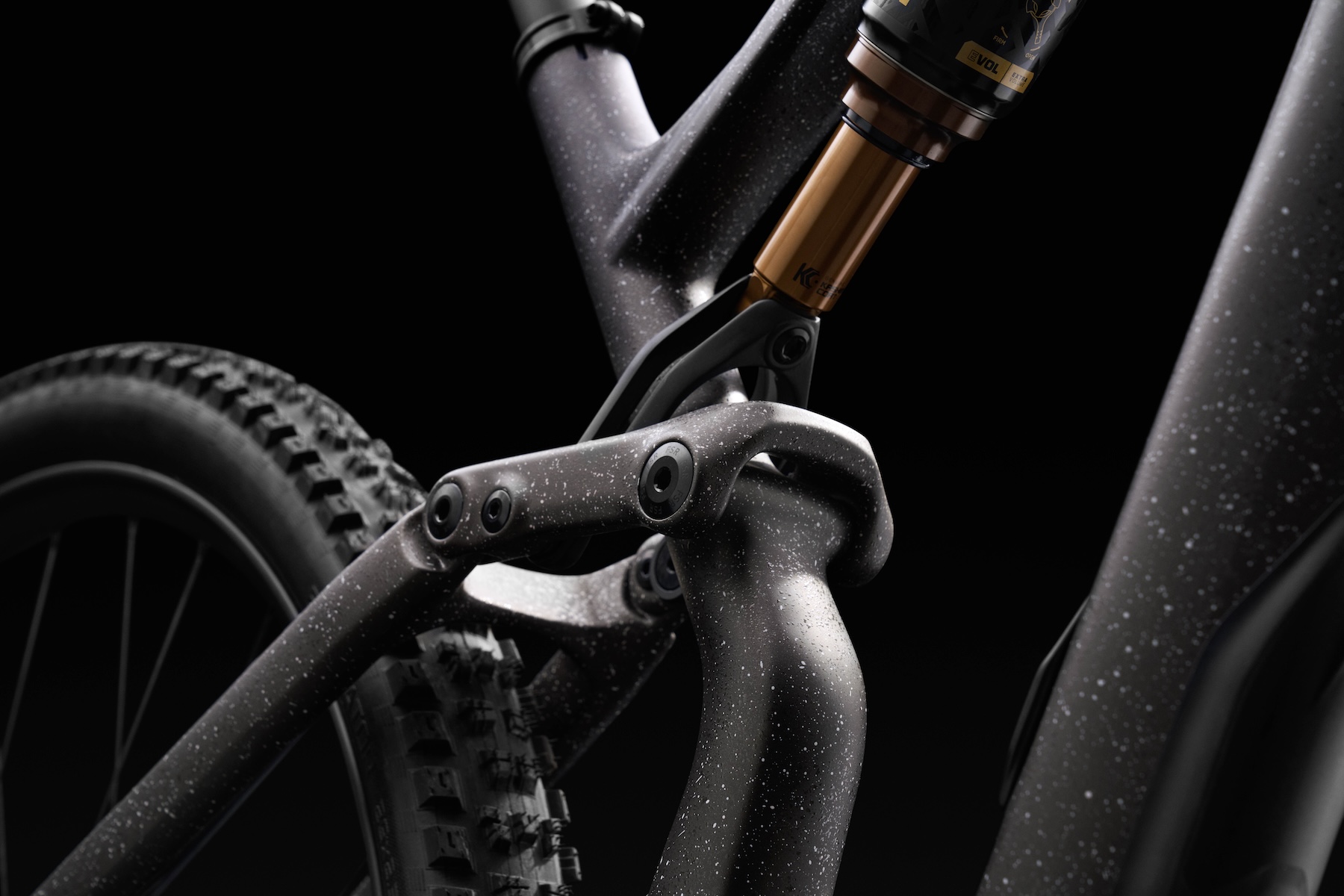
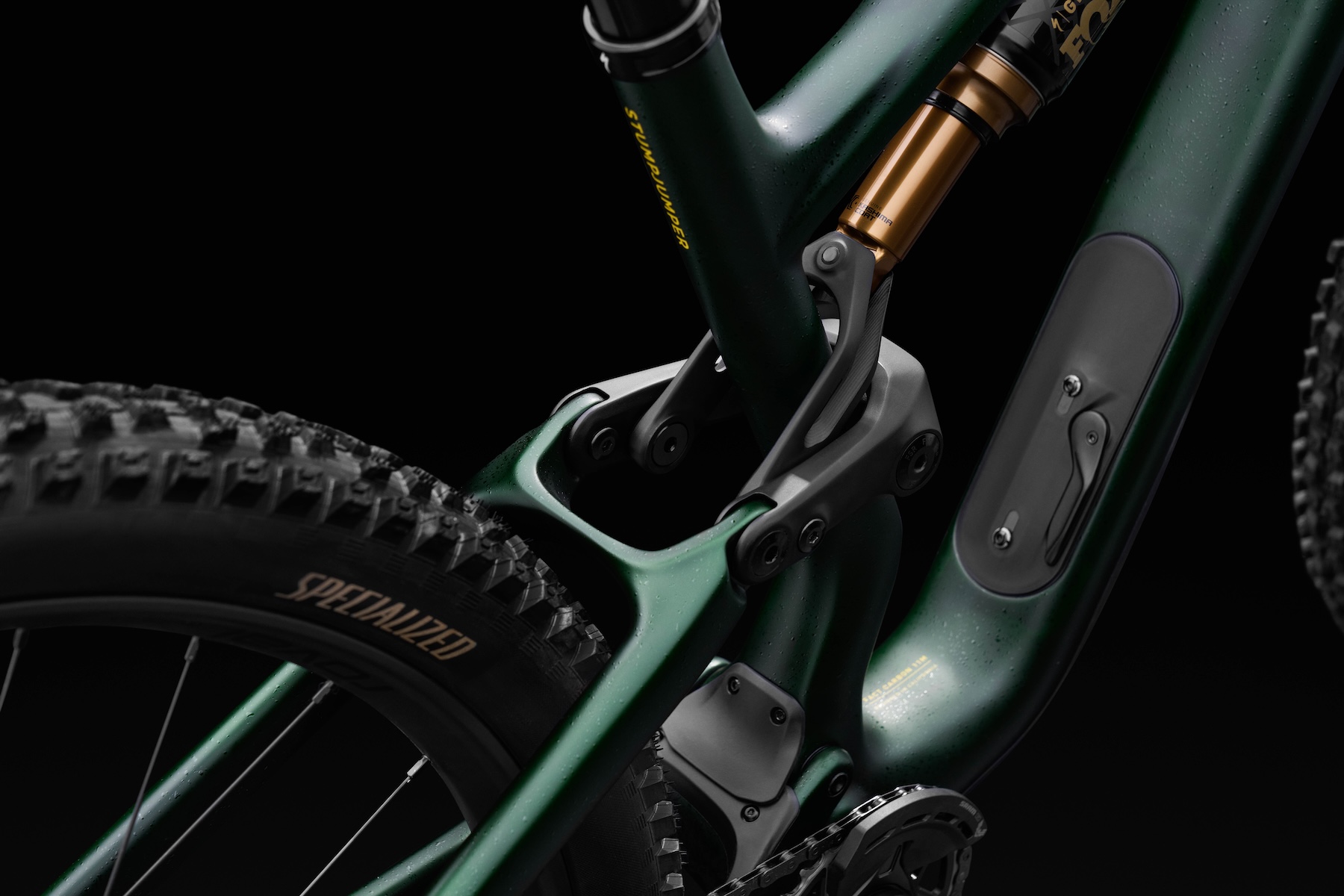
GENIE Rear Shock Concept
One of the most significant changes with the new Stumpjumper is the GENIE rear shock technology — a new air spring design that effectively varies the volume of the rear shock throughout the stroke to blend the benefits of high- and low-volume spring designs in different scenarios. Understanding the proposed benefit here requires a bit of background on air spring design and tradeoffs, so let’s briefly dip into those more technical details before we get into GENIE.
Air springs have changed massively over time and with a lot of nuance, but in their simplest form, air springs employ two opposing air chambers, positive and negative, which affect the spring curve based on their proportional size. Negative springs are critically important to the early stroke feel of an air shock, but it’s the positive side where the GENIE gets interesting,, so we’ll focus there.
Most air-sprung shocks on the market use a fixed positive air volume, which can be adjusted using volume spacers. In the simplest terms, smaller volume shocks have much more progression, meaning that the force required to compress the shock increases significantly from the start to the end of travel. Because much of the air spring ramp-up comes at the end of the curve, that means that there’s often a compromise in getting adequate early and mid-stroke support versus being able to use full travel. Larger volume shocks have a more linear rate of progression, but the tradeoff with that more linear progression rate is that they can often lack support at the end of the travel. Cramming a bunch of volume spacers in the shock can help with that end stroke support, but essentially introduces the tradeoffs of a smaller volume shock.
Enter Specialized’s new GENIE concept. Working with Fox, Specialized has developed a proprietary way of having a rather high-volume air chamber which is reduced to a smaller volume in the final 30% of the shock’s stroke. With the GENIE shock, an inner air chamber is accompanied by a secondary outer sleeve that effectively creates a secondary, but attached air chamber that increases overall volume and creates a more linear air spring curve. At 70% through the travel, a sliding internal band blocks off the shock’s outer air chamber by covering the ports connecting the two chambers, closing off that external sleeve and shrinking the overall air volume. This abruptly shrunken available air volume creates a sudden increase in spring progression, resulting in a shock that starts off with a more linear air spring characteristic but ends as quite a progressive one.
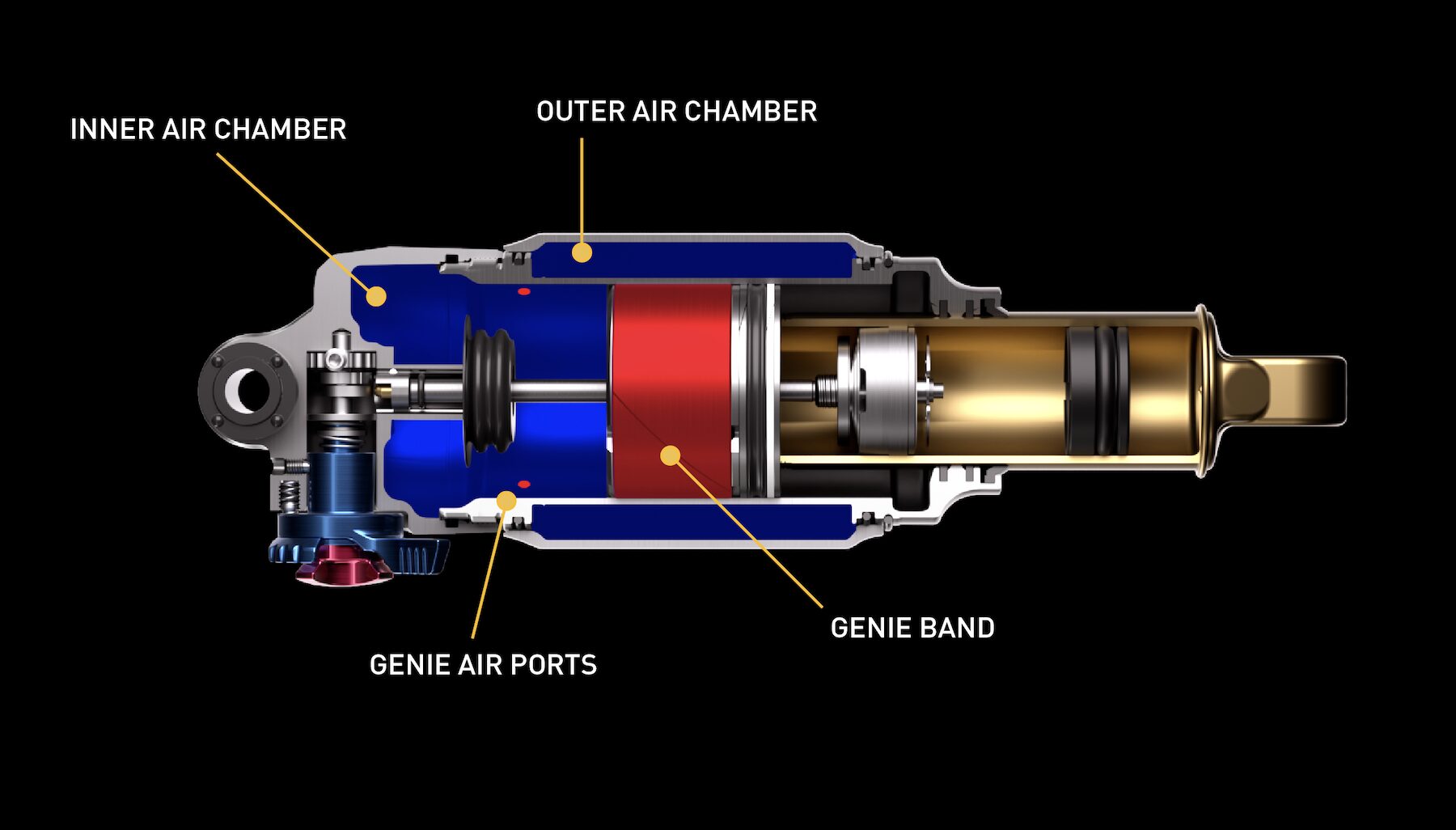
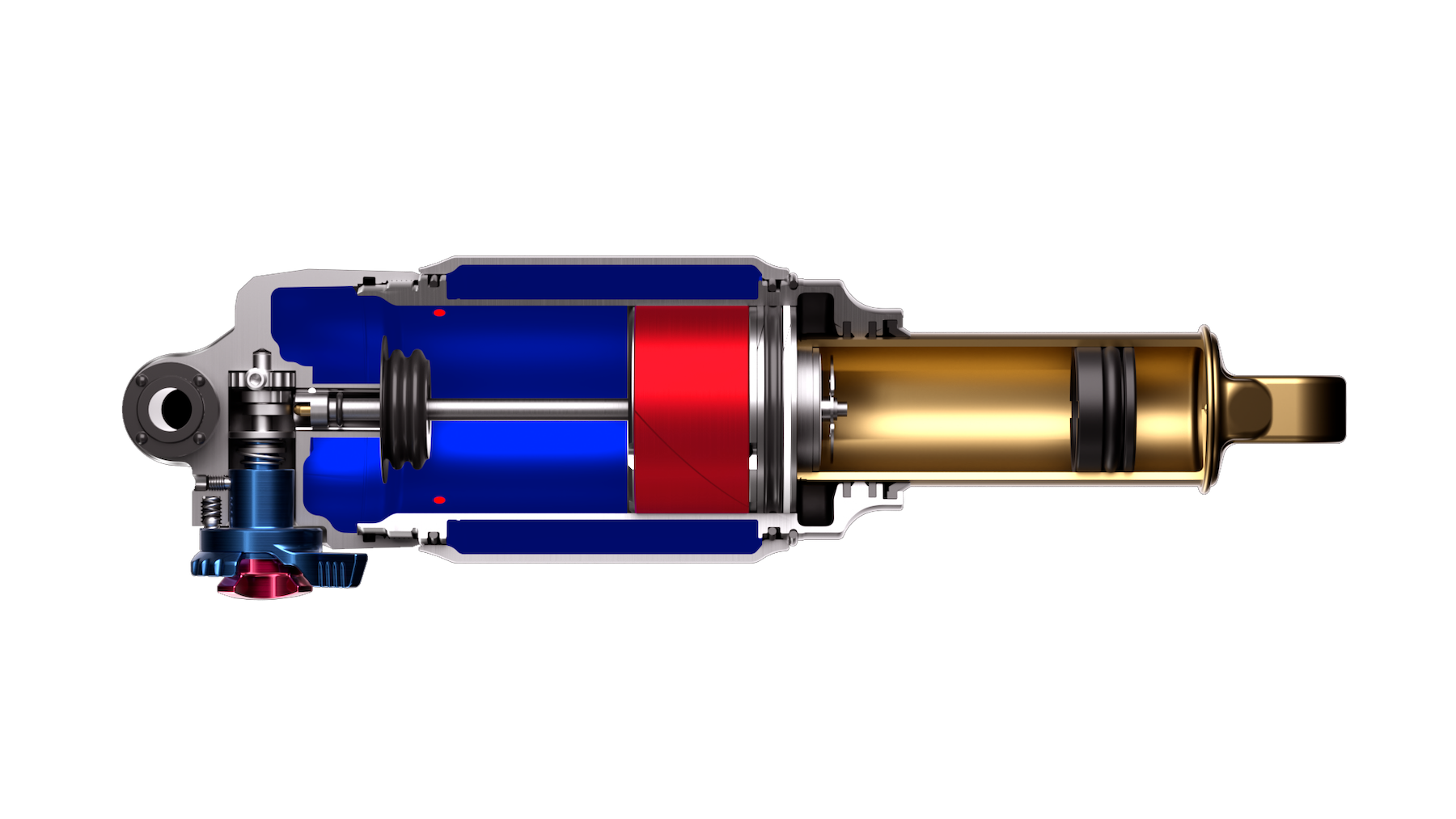
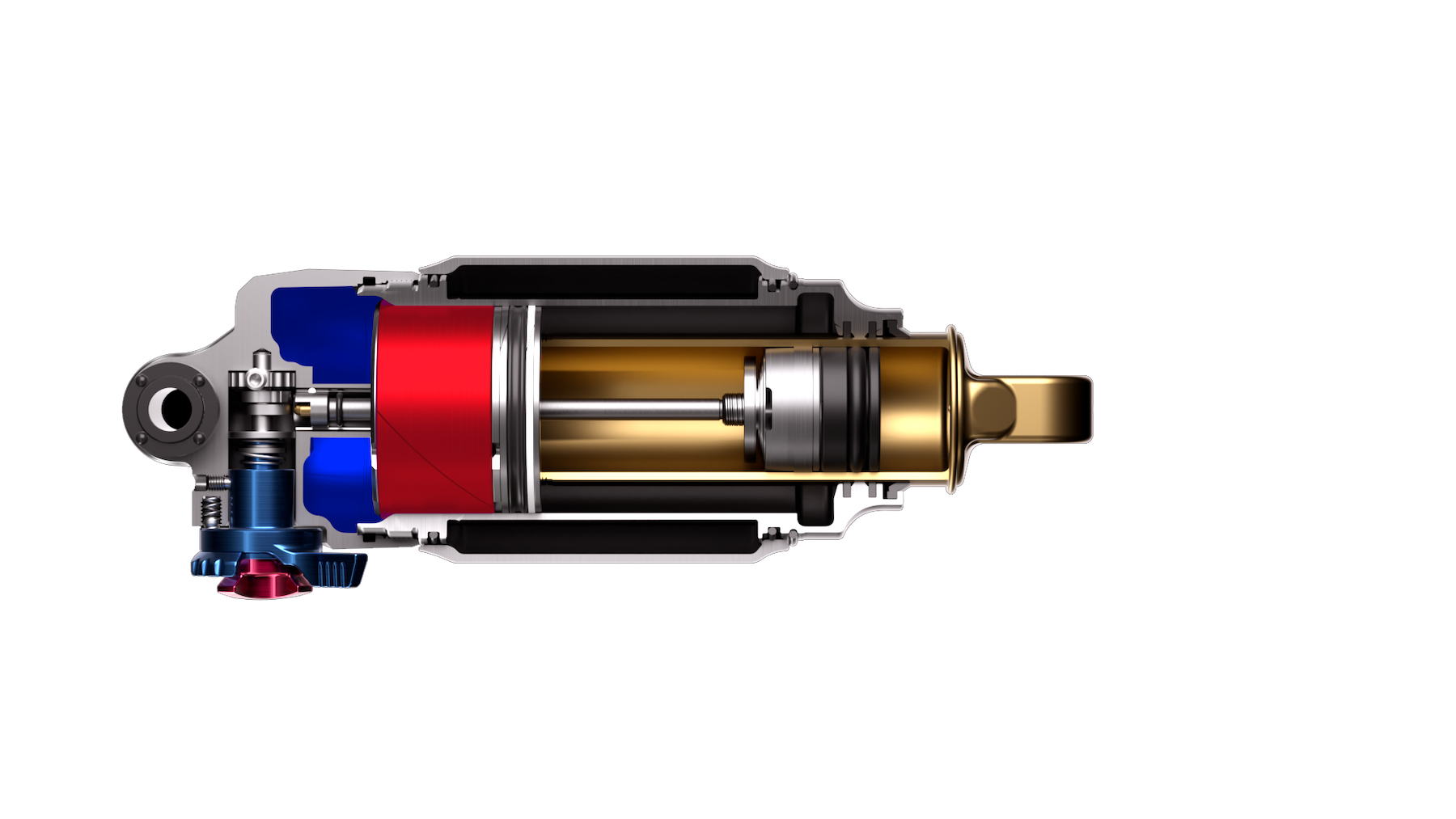
It’s important to note that some shocks, like the EXT Aria, and several forks (Ohlins RXF 38, Manitou Mezzer, EXT Era) use a dual positive spring setup to allow more customization of that spring curve, with a secondary positive chamber that can be run at higher pressures to create a smoother and adjustable end-stroke ramp up. Those chambers, however, are ultimately still separate and require tuning of relative air pressures to get the desired behavior. Compared to these rare and often rather expensive designs, the GENIE system simplifies things by requiring the adjustment of only a single air valve.
Specialized makes some pretty bold claims about this new tech, including promises of “57% less traction loss” and “39% fewer severe bottom-out events” relative to a standard air spring. Relative to the outgoing Stumpjumper EVO, the Stumpjumper 15 claims to use 16.3% more travel for a given impact, indicating a greater response to impacts. We typically don’t put much stock in claims like these because of the nuances of riding style, setup preferences, etc., so we’ll have to see for ourselves just how the new system performs on the trail.
As a final note here, the GENIE-equipped shock is only available as an inline option (i.e., no piggyback for extra oil volume) based on the Fox Float shock, so it will be interesting to see how the big claims of performance hold up on more sustained and rough descents where inline shocks can start to heat up.
Fit & Geometry
Unsurprisingly, the new Stumpjumper follows Specialized’s S-Sizing concept, which encourages riders of different sizes to select a frame size based on individual proportions and riding preferences. While it’s really not functionally different from a typical Small, Medium, Large, etc. approach, it can help folks who tend to think “I’m a Large” consider geometry more fully when picking a frame size.
Folks familiar with the prior Stumpjumper EVO will recognize the familiar 2-position flip chip at the pivot between the chainstay and dropout. This allows for a 7 mm swing in bottom bracket height between Low and High settings, while an eccentric headset cup allows for 3 headtube angle options: 63° (Low), 64.5° (Mid) and 65.5° (High).
Outside of those adjustments, most geometry figures are in the range of what we’d consider normal for a modern Trail bike. With the reference position of the headtube in the Mid position and bottom bracket in High, the S4 gets a 475 mm reach, 640 mm stack, rather substantial 38 mm bottom bracket drop, and short 435 mm chainstays. Full geometry figures are included in the chart below:

The Builds
Stumpjumper 15 Alloy
The Alloy may be the more wallet-friendly version of the Stumpjumper 15, but Specialized has still done well to invest in some well-chosen (and unexpectedly burly) parts choices.
Starting with the base model Stumpjumper Alloy, it comes with a RockShox Psylo Silver fork (140 mm travel on S1, 150 mm for all other sizes) but doesn’t get the new GENIE-equipped shock.
The Comp Alloy build gets a Fox 36 Rhythm (140 mm on S1, 150 mm on all other sizes) along with the GENIE-equipped Fox Float Performance shock. The Alloy and Comp Alloy also feature Shimano MT420 and TRP Trail EVO brakes, respectively, both with 203 mm front rotors across sizes and 203 mm rear rotors on sizes S3 and up — S1 and S2 sizes get a smaller 180 mm rotor out back.
As the burliest build, the Fox Coil Alloy gets you a 160 mm Fox 38 Factory Grip X2 fork, DHX Factory shock, and TRP DH-R Evo brakes with 220 mm front and 203 mm rear rotors across all sizes. That’s a very downhill-oriented suspension and brake spec for a bike with 145 mm rear travel.
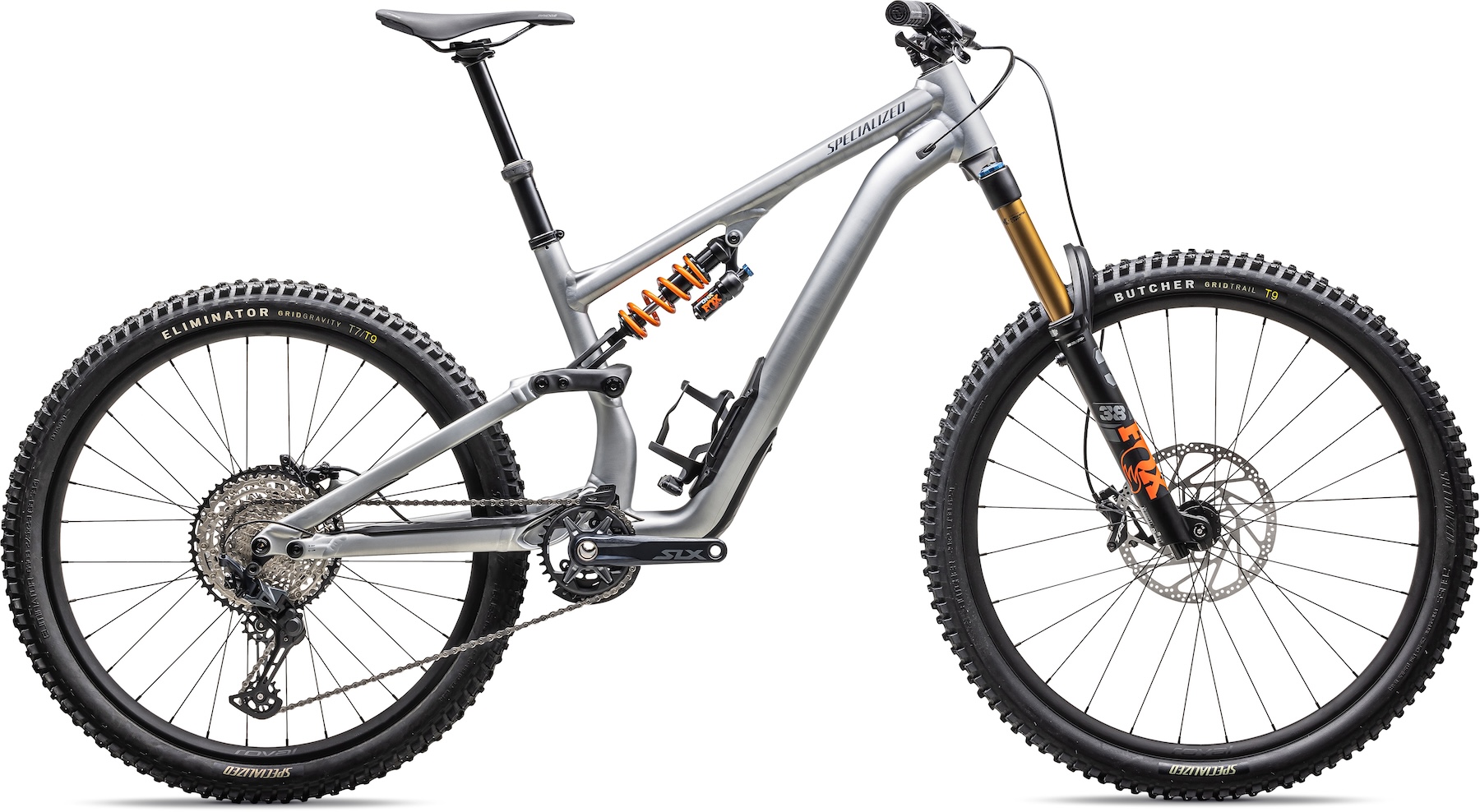
Dropper post lengths are generous and size-specific, with S1 size getting 125 mm drop, while S2 gets 150 mm, S3 gets 170 mm, and S4 and above get 200 mm (or 190 mm on the Comp Alloy’s X-Fusion post).
Interestingly, despite all-SRAM build options on the carbon version, the Alloy sticks with cable-actuated Shimano drivetrains across the board.
The full set of Alloy builds is as follows:
- Drivetrain: Shimano Deore
- Brakes: Shimano MT420 (w/ 203 mm front rotor, 180 mm rear on S1–S2 and 203 mm on other sizes)
- Fork: RockShox Psylo Silver (S1: 140 mm travel, all others: 150 mm)
- Shock: X-Fusion 02 Pro RL
- Wheels: Specialized alloy rims w/ sealed cartridge bearing hubs (S1–S2: mixed wheels, S3–S6: full 29”)
- Dropper Post: TranzX (S1: 125 mm, S2: 150 mm, S3: 170 mm, S4–S6: 200 mm)
- Drivetrain: Shimano SLX
- Brakes: TRP Trail Evo (w/ 203 mm front rotor, 180 mm rear on S1–S2 and 203 mm on other sizes)
- Fork: Fox 36 Rhythm (S1: 140 mm travel, all others: 150 mm)
- Shock: Fox Float Performance GENIE
- Wheels: Specialized alloy rims w/ sealed cartridge bearing hubs (S1–S2: mixed wheels, S3–S6: full 29”)
- Dropper Post: X-Fusion Manic (S1: 125 mm, S2: 150 mm, S3: 170 mm, S4–S6: 190 mm)
- Drivetrain: SRAM GX Transmission
- Brakes: TRP DH-R Evo (w/ 220 mm front rotor, 203 mm rear)
- Fork: Fox 38 Factory Grip X2 (160 mm)
- Shock: Fox DHX Factory
- Wheels: Roval Traverse w/ DT Swiss 370 hubs (S1–S2: mixed wheels, S3–S6: full 29”)
- Dropper Post: PNW Loam (S1: 125 mm, S2: 150 mm, S3: 170 mm, S4–S6: 200 mm)
Specialized is also making the Alloy frameset available for $2,300 USD, which includes a Fox Float Performance GENIE shock.
Stumpjumper 15 Carbon
The carbon side of the Stumpjumper 15 family follows the same general build structure of the Alloy version but with several tweaks.
All Stumpjumper Carbon builds get the new GENIE shock and a 150 mm fork, except for the Ohlins Coil build, which comes with a TTX22 M.2 rear shock and an Ohlins RXF38 M.2 up front set to 160 mm travel. The two new Stumpjumper EVO builds get 160 mm travel forks and a Fox Float X-based version of the GENIE shock with a piggyback reservoir instead of the inline Float-based version on the standard Stumpjumper builds.
Specialized also continues with prioritization of powerful brakes. All builds (except the TRP-equipped Ohlins Coil build) feature SRAM’s very powerful Maven brakes, and with a 200 mm front rotor no less. S1–S2 sizes get a smaller 180 mm rear rotor where S3+ sizes get a 200 mm one, but no matter how you look at it, that’s a whole lot of brake for a 145 mm rear travel bike. Like its Fox Coil Alloy sibling, the Ohlins Coil build gets TRP DH-R Evo brakes with a 220 mm rotor up front and 203 mm out back on all sizes.
Speaking of SRAM, cable-loving luddites among us will be saddened to know that the electronic revolution is officially here — with the carbon version of the Stumpjumper 15, every model gets SRAM’s Transmission in GX, X0, or XX trim depending on the build. Fortunately, the Alloy builds remain a cable-friendly option.
The same long dropper post lengths seen on the Alloy builds continue with the Carbon Stumpjumper 15, from 125 mm on the S1 to 200 mm on S4 and above (again, excepting the Comp build’s X-Fusion post which tops out at 190 mm). Pro builds come with Bike Yoke Revive MAX posts that eke out a bit more travel at each size (S2 gets 160 mm, S3 185 mm, S4+ 213 mm), but unfortunately the spendy S-Works Stumpjumper comes with the Reverb AXS which still maxes out at 170 mm.
Highlights from each model’s available builds are as follows:
- Drivetrain: SRAM GX Transmission
- Brakes: SRAM Maven Bronze (w/ 200 mm front rotor, 180 mm rear on S1–S2 and 200 mm on other sizes)
- Fork: Fox 36 Rhythm (S1: 140 mm travel, all others: 150 mm)
- Shock: Fox Float Performance GENIE
- Wheels: Specialized alloy rims w/ sealed cartridge bearing hubs (S1–S2: mixed wheels, S3–S6: full 29”)
- Dropper Post: X-Fusion Manic (S1: 125 mm, S2: 150 mm, S3: 170 mm, S4–S6: 190 mm)
- Drivetrain: SRAM GX Transmission
- Brakes: SRAM Maven Bronze (w/ 200 mm front rotor, 180 mm rear on S1–S2 and 200 mm on other sizes)
- Fork: Fox 36 Performance Elite (S1: 140 mm travel, all others: 150 mm)
- Shock: Fox Float Performance Elite GENIE
- Wheels: Roval Traverse w/ DT Swiss 370 hubs (S1–S2: mixed wheels, S3–S6: full 29”)
- Dropper Post: PNW Loam (S1: 125 mm, S2: 150 mm, S3: 170 mm, S4–S6: 200 mm)
- Drivetrain: SRAM GX Transmission
- Brakes: TRP DH-R EVO (w/ 220 mm front rotor, 203 mm rear)
- Fork: Ohlins RXF38 M.2 (160 mm)
- Shock: Ohlins TTX22 M.2
- Wheels: Roval Traverse w/ DT Swiss 370 hubs (S1–S2: mixed wheels, S3–S6: full 29”)
- Dropper Post: PNW Loam (S1: 125 mm, S2: 150 mm, S3: 170 mm, S4–S6: 200 mm)
- Drivetrain: SRAM X0 Transmission
- Brakes: SRAM Maven Silver (w/ 200 mm front rotor, 180 mm rear on S1–S2 and 200 mm on other sizes)
- Fork: Fox 36 Factory GRIP X2 (S1: 140 mm travel, all others: 150 mm)
- Shock: Fox Float Factory GENIE
- Wheels: Roval Traverse SL carbon w/ Industry 9 1/1 hubs (S1–S2: mixed wheels, S3–S6: full 29”)
- Dropper Post: Bike Yoke Revive MAX 3.0 (S1: 125 mm, S2: 160 mm, S3: 185 mm, S4–S6: 213 mm)
- Drivetrain: SRAM XX Transmission
- Brakes: SRAM Maven Ultimate (w/ 200 mm front rotor, 180 mm rear on S1–S2 and 200 mm on other sizes)
- Fork: Fox 36 Factory GRIP X2 (S1: 140 mm travel, all others: 150 mm)
- Shock: Fox Float Factory GENIE
- Wheels: Roval Traverse SL carbon w/ DT Swiss 240 hubs (S1–S2: mixed wheels, S3–S6: full 29”)
- Dropper Post: RockShox Reverb AXS (S1: 125 mm, S2: 150 mm, S3–S6: 170 mm)
In addition to the complete builds, Specialized also offers an S-Works frameset version priced at $3,500, which comes with a Float Factory GENIE shock.
Full Review
The Specialized Stumpjumper is one of the most storied mountain bikes of all time, and the addition of the burlier Stumpjumper Evo to go alongside the standard version only broadened its appeal. We had some questions when Specialized decided to merge the standard Stumpjumper and Stumpjumper Evo into just one model, the Stumpjumper 15. And even more questions followed when they subsequently (and quietly) added the “Evo” back to the name of some of the new Stumpjumper 15 models.
Well, after multiple reviewers spent time aboard the latest Stumpy in both of its new forms, we now have answers. Let’s get into it.
[Quick Note on Builds: Following the Stumpjumper 15’s initial release, Specialized added new builds with “Evo” in their names. They use the same frame as the regular Stumpy 15, but the Evo variants feature a piggyback shock based on the Fox Float X (still with the Stumpjumper 15’s signature Genie air can) rather than the non-piggyback Fox-Float-based version. The Evo builds also come with a longer 160mm-travel fork. We’ve tried the Stumpjumper 15 with both the standard suspension and with a 160 mm fork / beefier piggyback shock akin to the Evo variants, which we’ll weigh in on below.]
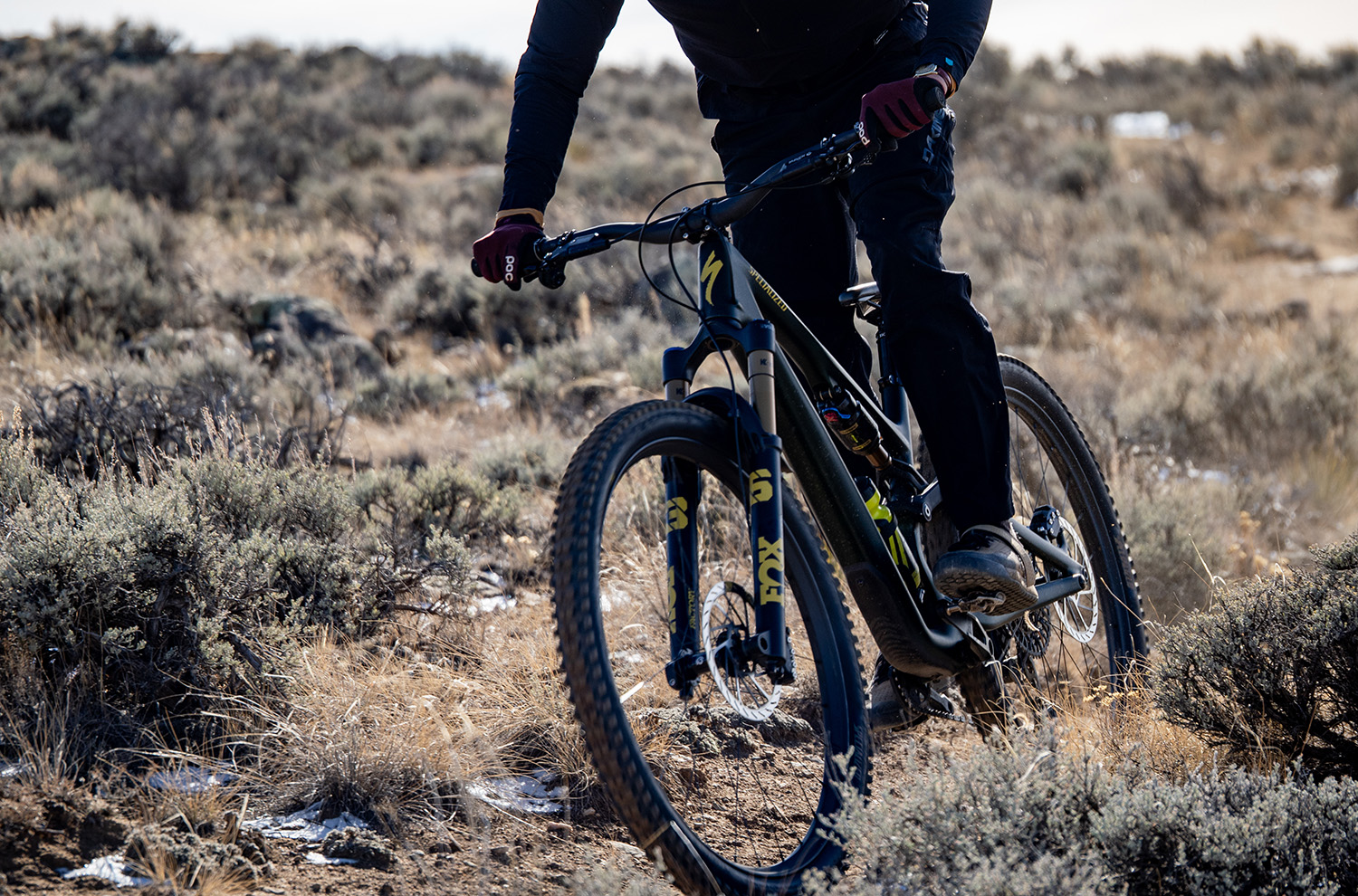
Fit & Sizing
Dylan Wood (5’10.5”, 160 lbs / 179 cm, 72.5 kg): Specialized ditched the conventional “Small through Extra Large” sizing scheme years ago and instead uses numbered sizes. If you’re not familiar with this approach, the nominal sizing can be a bit confusing on the Stumpjumper 15. We tested the size S4 Stumpy, which is most similar to other brands’ “Large” sizes. And, well, it fit like a modern size Large mountain bike, for the most part.
During my first few pedal strokes around the parking lot aboard the Stumpjumper 15, I found a mostly intuitive fit. There aren’t really any numbers that jump out on the geometry chart, and subsequently, there weren’t any strange aspects of this bike’s fit that stood out, either. I will say that, at 76.5º, the Stumpjumper 15’s effective seat tube angle is a bit on the slacker side for its class. Personally, this resulted in the fit of the S4 Stumpy 15 to feel a bit longer and more stretched than its moderate reach of 475 mm would suggest.
On the other hand, folks who find effective seat tube angles of ~78º or steeper to be a little too steep might find some familiarity in the Stumpjumper 15’s fit. If anything, this potentially demonstrates Specialized’s goals for the latest Stumpy to be a true all-rounder — more on this later.
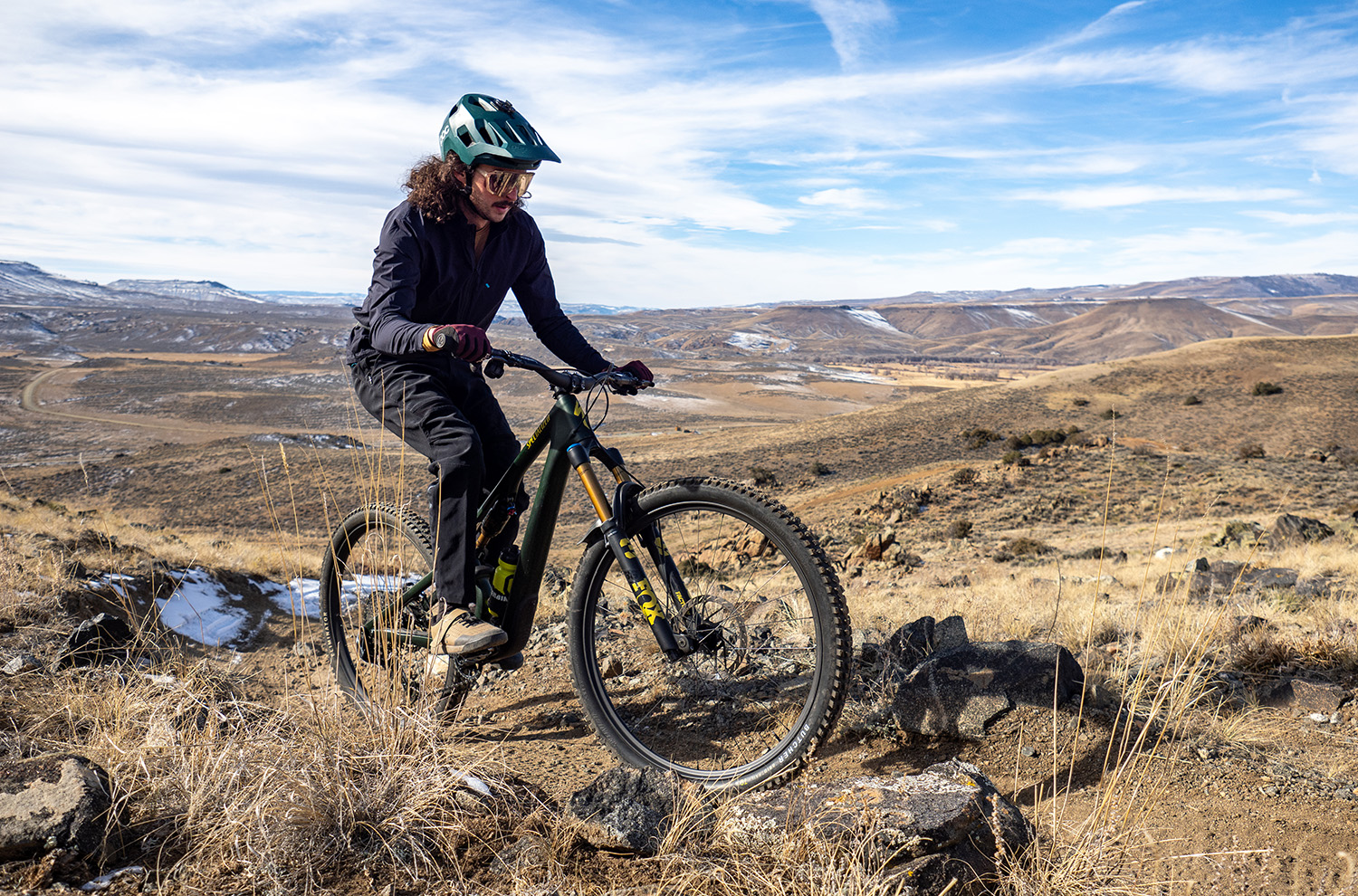
David Golay (6’, 160 lb / 183 cm, 72.6 kg): I pretty much agree with how Dylan characterized the fit of the S4 Stumpjumper we tested from an objective standpoint; how that sizing worked out for me, personally, is a little bit of a different story.
Specialized’s recommended sizing puts me (6’ / 183 cm) in the overlapping region between the S4 and S5 sizes, which I think is correct — to the point that I felt like a hypothetical S4.5 would really be my sweet spot.
This bike’s not-super-steep seat tube angle and resulting long-ish effective top tube that Dylan referenced are a big part of the story there. I’ve spent most of my time on the Stumpjumper on our S4 review bike, but have also ridden an S5 a bit, and found that which size I prefer depends a lot on where and how I’m riding the bike.
I’ll tease out those details more below, but the short version is that I mostly prefer the more compact seated fit of the S4 frame when climbing and in more rolling terrain; on the way back down, the added stability and room to move around on the S5 frame were welcome on burlier trails in particular.
I think the fit and sizing decisions that Specialized made are generally coherent, and while the sizing steps on the Stumpjumper could be smaller, they aren’t massive by any stretch. It’s just a case of a bike where I happen to be truly on the border, size-wise.
Climbing
Dylan: The Stumpjumper 15 is an efficient and capable climber for its class. When putting power into the cranks, its suspension feels responsive and firm, losing impressively little of the rider’s input in the form of pedal bob. The Stumpjumper 15 is a bike that encourages you to pedal hard and rewards aggressive efforts with plenty of forward momentum, especially on trails and roads that are mostly level and smooth.
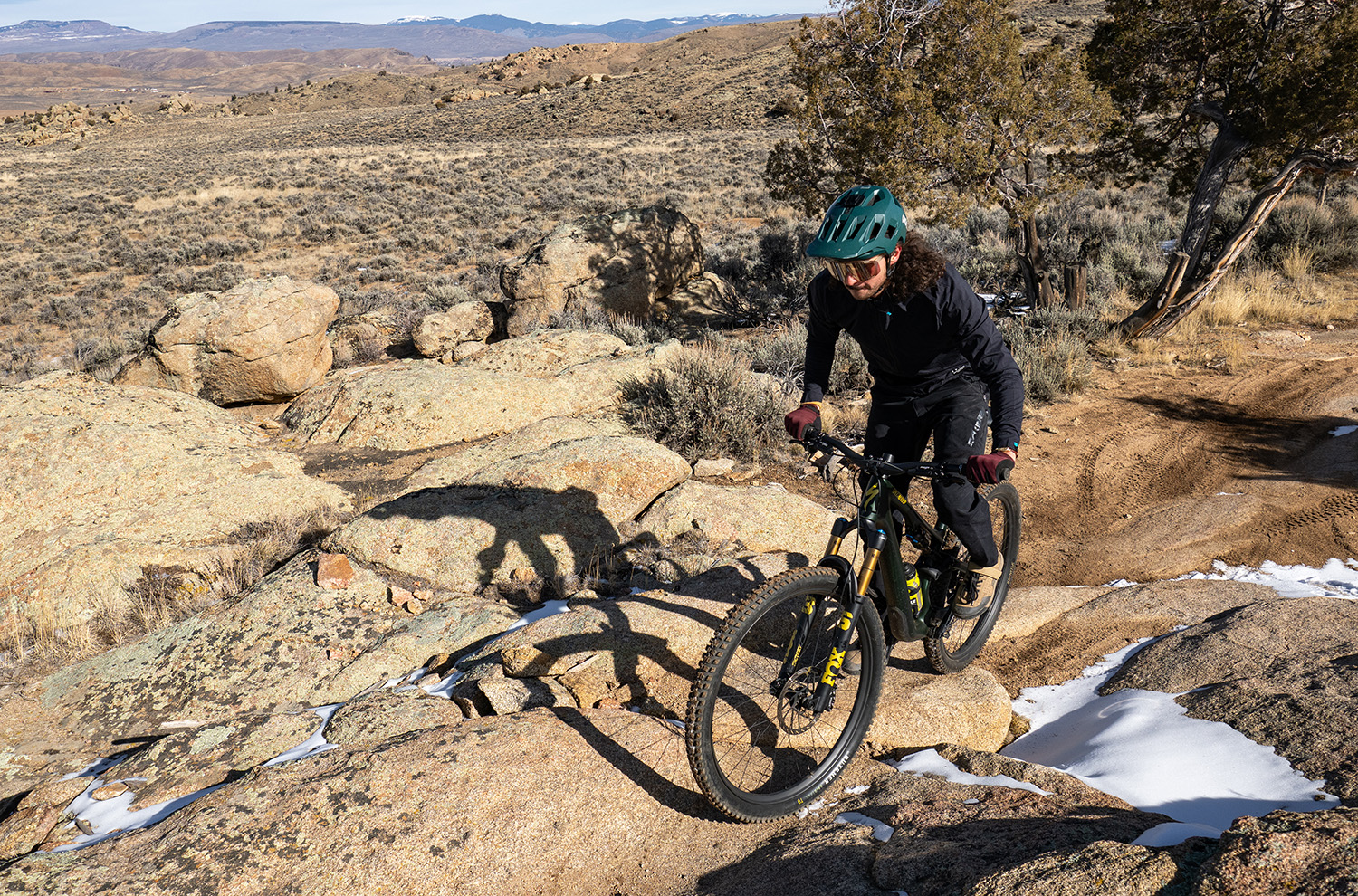
As far as technical climbing goes, the Stumpjumper 15 does well, but it isn’t a class leader by any means. There are other options out there (the Santa Cruz Hightower 4 comes to mind) that offer a more plush suspension platform that does a better job of conforming to rocky and rooty terrain on the way up, ultimately providing better traction. However, those sorts of bikes — the Hightower included — generally sacrifice some efficiency to get there. The Stumpjumper 15’s suspension certainly offers better traction on technical climbs than true XC bikes like the Specialized Epic 8, but the Stumpy 15 also requires a more precise and dynamic approach than more supple Trail bikes that let you plow through techy climbs more easily.
I found the Stumpy’s effective seat tube angle to handle a variety of uphill grades well, from flatter, traversing climbs to steep, punchy uphills. On the steepest of climbs, I did find myself wishing for a slightly steeper seat tube angle that would let me get some more weight over the front wheel. On the other hand, the Stumpjumper 15 offers a more comfortable experience on longer, mellower-grade climbs than bikes with effective seat tube angles closer to ~78º. Overall, I think Specialized found a good balance here, with fore / aft saddle adjustment allowing folks to refine the fit to match their preferences and terrain.
David: I’m with Dylan in that the Stumpjumper pedals quite well; if anything, I’m higher on its technical climbing prowess than he is.
I think that’s more down to our respective preferences and the kinds of technical climbing we encounter in our respective home areas than any sort of disagreement on the objective points, though. I’m in full agreement that the Stumpjumper’s suspension, to some extent, favors efficiency over maximizing traction and compliance under power. But it’s still reasonably balanced in its performance rather than being way off on that end of the spectrum.
In short, the more your technical climbs are of the loose, traction-limited variety, the more advantageous a more compliant, traction-oriented bike starts to be. But the more you find yourself making big, dynamic moves to loft the bike onto ledges and power up and over discrete obstacles, the more the efficient, energetic-feeling suspension of the Stumpjumper feels like an asset.
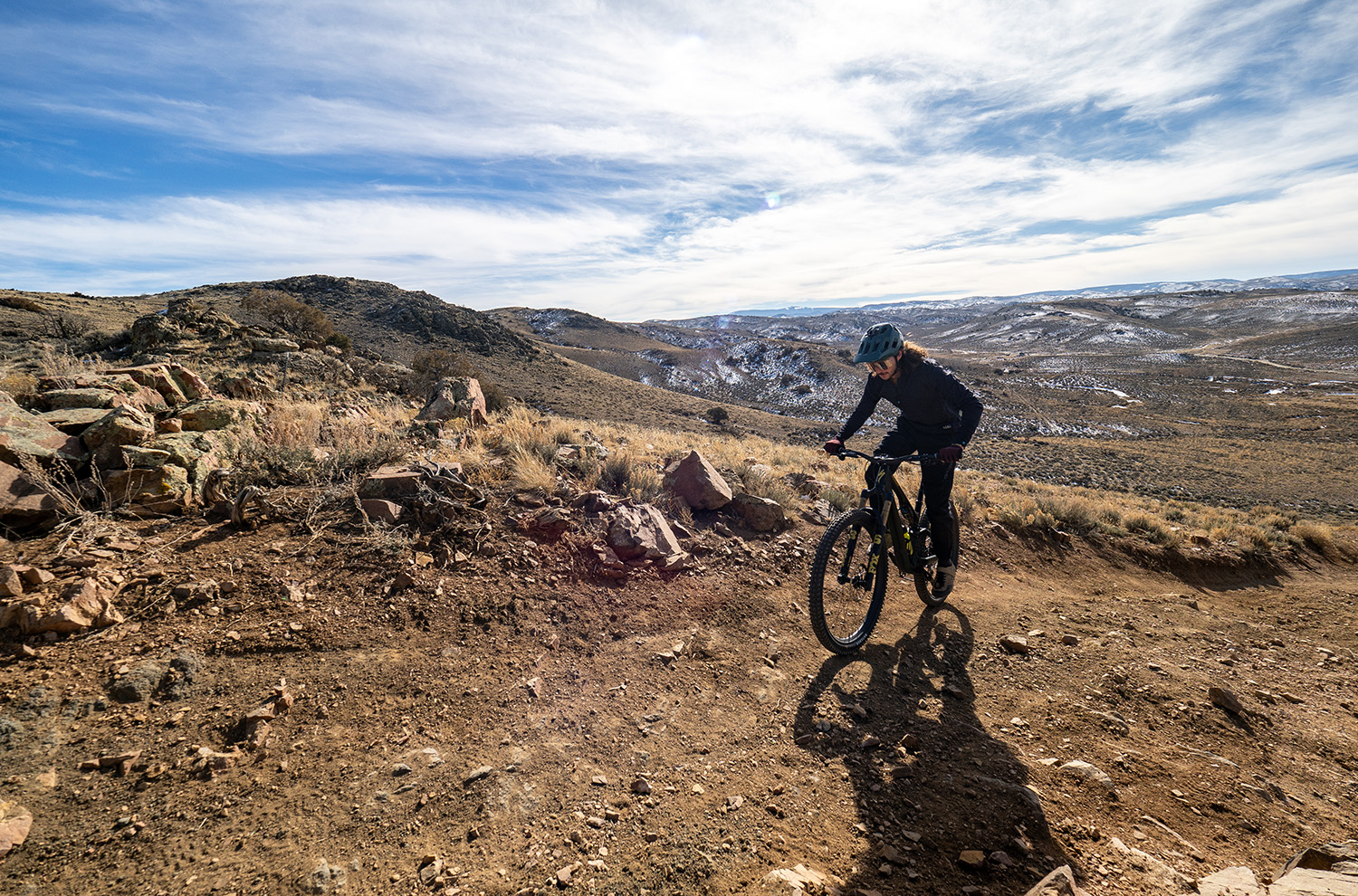
The Stumpjumper 15’s traction under power is respectable, but if you want a bike to just tractor up and over whatever you put in front of it, there are better options in its general class (most of which feel less efficient and energetic). The Stumpumper 15 makes a stronger case the more you want a relatively efficient, responsive-feeling mid-travel Trail bike that facilitates technical climbing through precise, dynamic riding.
I mentioned feeling a bit between sizes on the Stumpjumper 15, and the fit when climbing has a lot to do with that. There are situations when descending where I clearly prefer the larger S5 Stumpjumper to the S4 (more on that in a minute), but the seated cockpit of the S5 is more stretched out than I’d like it to be, especially on steeper climbs.
But, especially for a bike that’s meant to be versatile and well-rounded rather than a dedicated winch-and-plummet machine, I think Specialized’s decision to go with a not-ultra-steep seat tube is a generally sensible one.
Descending
Dylan: The Stumpjumper 15 continues to be a versatile and adaptable bike on the way down, handling a variety of terrain well. This bike feels like a true all-rounder, with suspension that feels slightly more lively and responsive than it is plush and forgiving.
This bike’s geometry creates a stable platform on the way down. The Stumpy 15 has a big sweet spot between its wheels that creates a sure-footed feeling in rough terrain. At the same time, its suspension feels responsive, rewarding an active riding style, pumping features, and pushing into corners. This combination of traits allows the Stumpjumper 15 to feel at home on both steep, chunky trails, as well as mellow, flowy ones — an impressive feat.
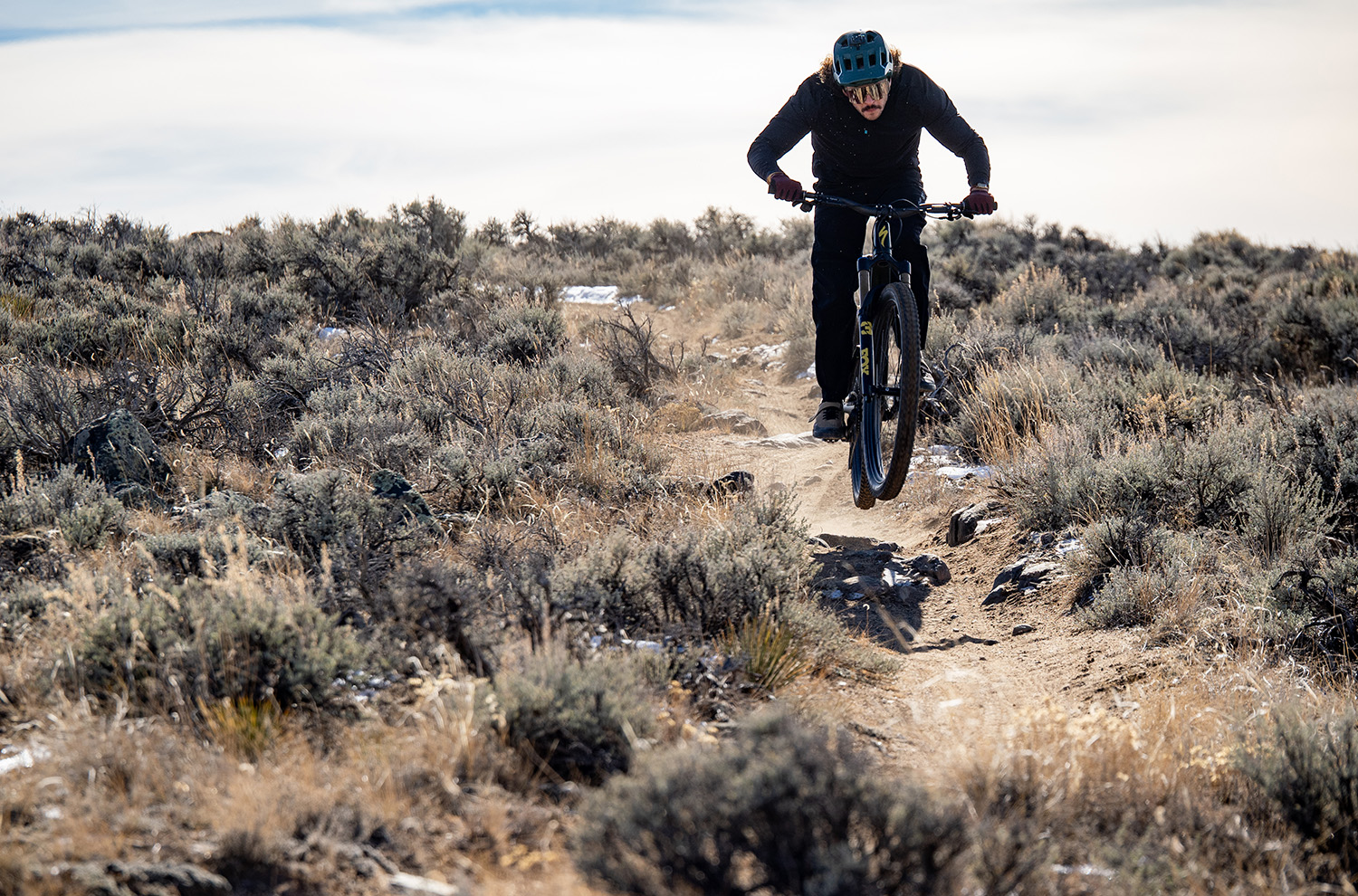
David: I’m mostly on the same page as Dylan here. The Stumpjumper is a generally well-rounded bike that feels at home on a relatively wide variety of trails. It’s a bike that’s hard to make feel truly out of place, from mellow flow trails to relatively steep, technical descents. There are better tools for a lot of specific jobs, but the Stumpjumper can have a good time on a wider range of trails than most.
Especially with my preferred suspension setup (more on that in a minute), the Stumpjumper 15 feels relatively lively and poppy rather than being especially planted and cushy in its suspension performance, though there’s a good bit of leeway to set it up to your preferences.
The Stumpjumper’s suspension offers good small-bump sensitivity and traction, relative to how lively and energetic it is, but there are a number of bikes in its general travel bracket that are more planted and composed when carrying speed through really fast, rough sections of trail. (That generally comes at the expense of some liveliness and versatility. Check out our Deep Dive comparisons for a lot more on that.)
I found the sweet spot on the S4 Stumpjumper to feel considerably smaller than Dylan did, but I think that’s mostly down to sizing and the fact that I’m a bit taller than he is. The S5 Stumpjumper (unsurprisingly) is more stable and gives me more room to move around on the bike without upsetting its weight distribution. On the other hand, the S5 also took away some of the sharp handling and liveliness that I appreciated about the smaller S4 in other areas.
In areas with more rolling, varied terrain, I like the fit of the S4 pretty well overall; the more I push the Stumpjumper into steeper, burlier descents, the more I appreciate the added stability and room to move around on the bike that the larger S5 size affords. Overall, I prefer the S4 for the sorts of riding that the Stumpjumper does best. If I really wanted to make it a lot more stable and composed, I’d opt for a burlier, more descending-oriented bike. But the sizing breaks happen to put me right on the brink.
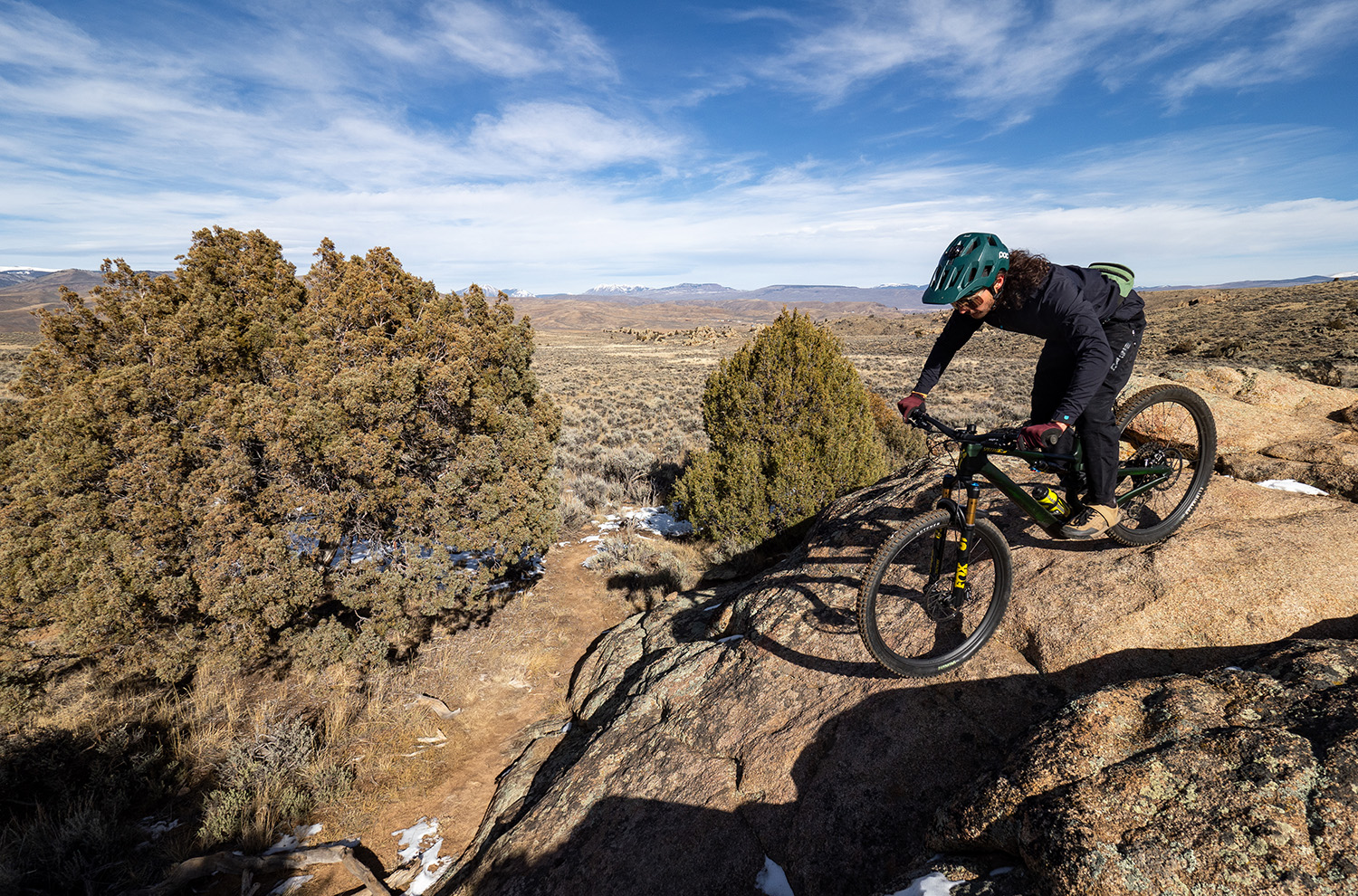
Dylan: With pretty middle-of-the-road reach and chainstay length numbers, the Stumpy 15 is a respectably playful bike. It’s relatively easy to get it airborne, and pre-loading its suspension results in powerful bunny hops. Additionally, I really like the cornering behavior of the latest Stumpjumper. It’s relatively easy to tip into corners, and it finishes turns in a balanced manner. At the same time, its moderately slack 64.5º head tube angle results in pretty stable, confident handling at high speeds and in steep terrain, relative to other do-it-all Trail bikes in this class.
David: I also really like the way the Stumpjumper corners, especially with the bike set up in its low bottom bracket / long chainstay geometry setting (which is how I prefer to run it overall). Especially in that setting, with the standard 29’’ wheels, the Stumpjumper 15 is notably easy to load up through the pedals and rail through a well-supported corner, while also being quick-handling and energetic enough to be easy to maneuver at lower speeds, too.
When set up with 29” front / 27.5” wheels, the Stumpjumper 15 feels a little quicker handling, a little less stable, and a notch easier to slash the rear end around and otherwise ride more playfully — pretty typical of most bikes that can convert between full-29er and mixed-wheel setups.
That said, the MX link that enables the mixed-wheel setup makes the Stumpjumper’s suspension quite a bit less progressive, sacrificing some small-bump sensitivity and bottom-out resistance in the process. I was able to at least partially work around it with the shock setup, mostly by running more volume spacers in the main air can, and a touch lower pressure overall. But I preferred the suspension performance in the 29er setup and found it easier to tune the shock for it. And that brings us to the performance of Specialized’s novel Genie shock:
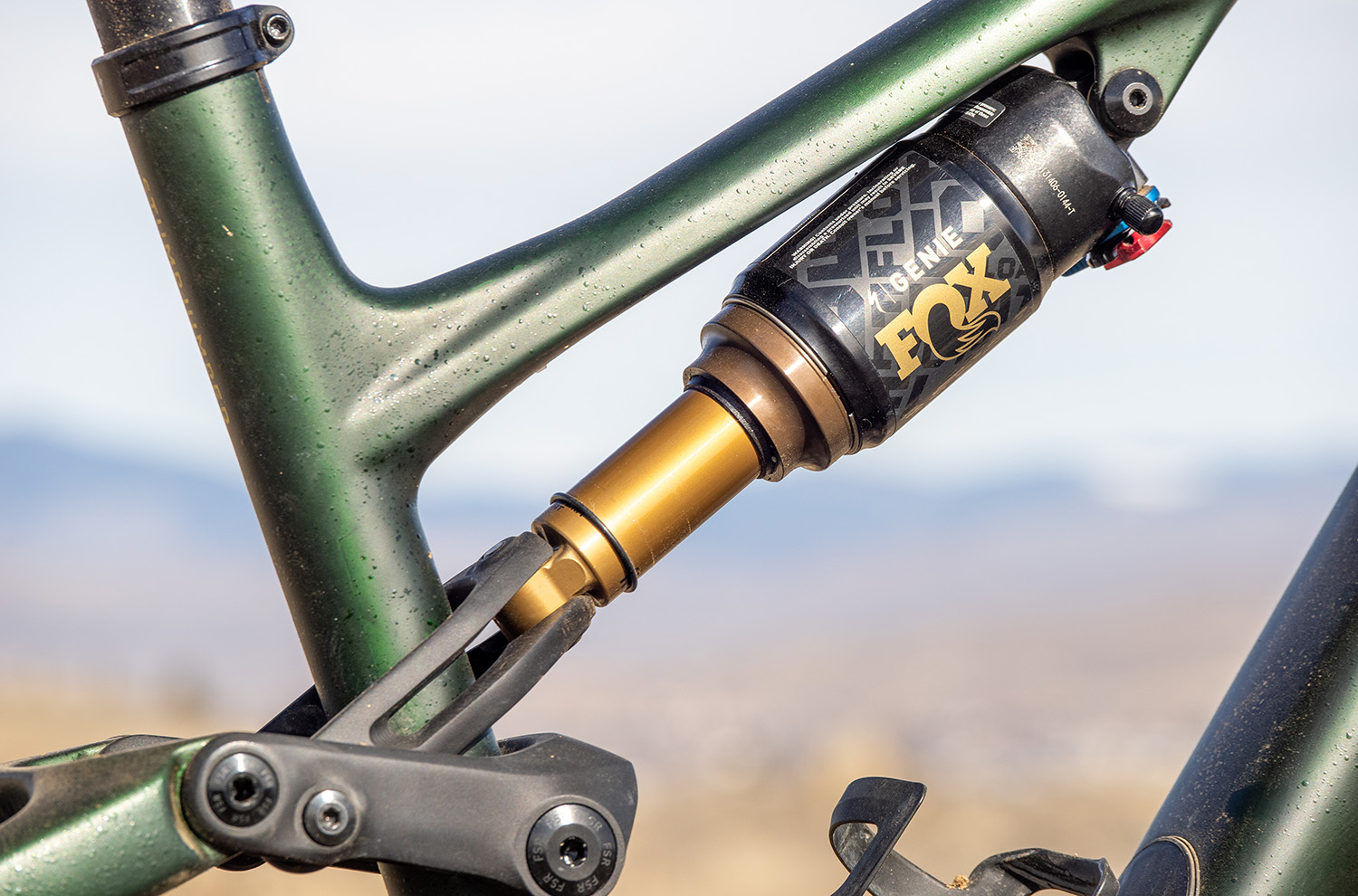
Dylan: This bike’s unique Genie shock was one of the biggest talking points when Specialized first revealed the Stumpjumper 15, and it’s definitely an important factor in how this bike performs. For all the technical details on the shock, scroll back up to the First Look portion of this review.
In my experience, the Stumpjumper 15 provides superb bottom-out resistance for its class, with this air shock ramping up quickly in the second half of its travel. While I’d be hesitant to say it provides the best of both worlds when it comes to coil and air shocks, it provides a nice combination of traits that further boost this bike’s versatility.
David: My take on the Genie shock is somewhat mixed, though I was able to find a combination of settings that I was happy with after some experimentation.
In short, Specialized’s take is that the Genie shock design helps make for suspension that’s relatively active and plush-feeling early in the travel, while still maintaining good bottom-out resistance — and the Genie shock does pull that off to a large degree. While that sounds great in theory, my complaint has more to do with the resulting tradeoffs.
With a middle-of-the-road volume spacer setup, I found the Genie shock to be too eager to use the middle part of its travel on mid-sized impacts at speed, and to ramp up too aggressively deep in the stroke under really sharp impacts. Specialized’s claim that the Genie shock lets the Stumpjumper use more of its travel more of the time without bottoming out feels largely correct, but I’m less sold on that being a consistently good thing. With the Stumpjumper feeling so eager to move through the middle part of its travel, I felt like it had a tendency to hang up as the rear suspension compressed deeply and rocked the bike rearward. Those issues felt most pronounced at speed on rough, technical trails.
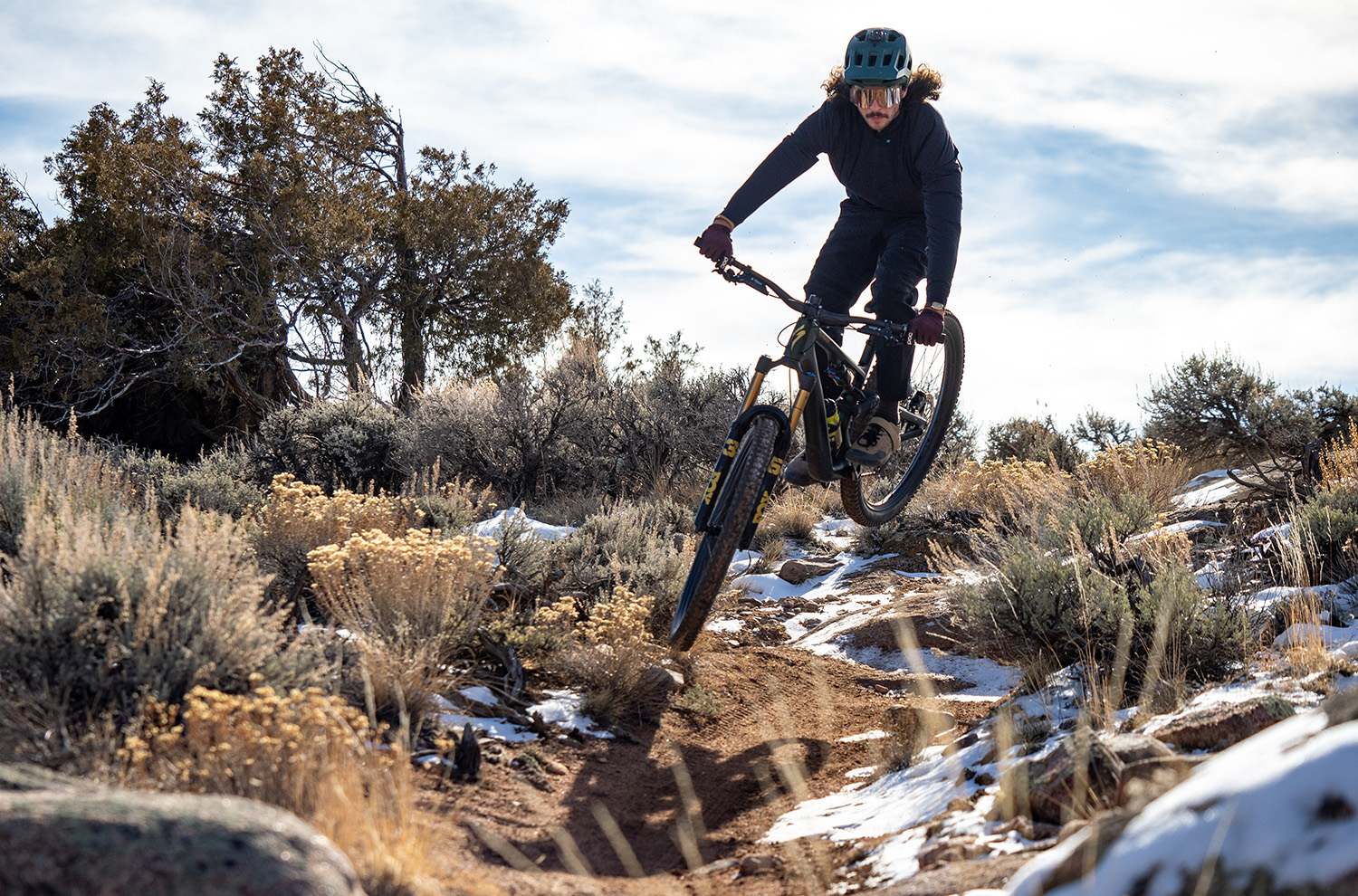
What worked well for me, though, was running the maximum number of spacers (four) in the outer Genie air sleeve, effectively minimizing the change in air can volume before and after the outer chamber was closed off. Doing so brought back the support that I felt was lacking with fewer spacers in the outer chamber. And, despite making the Stumpjumper 15’s suspension a bit less planted and cushy, this approach made it easier for me to ride it aggressively by making the chassis feel more stable and predictable.
So, while I preferred to minimize the effect of the Genie system in how I set up the Stumpjumper’s suspension, I can readily imagine why some folks would feel otherwise, and I also think the Genie design gives a wider and, at least in some ways more useful, overall range of tuning options than standard volume spacers alone. The more you want your suspension to feel plush and cushy over being more supportive and lively, the more appealing I think the Genie shock will be.
The Build
Dylan: We spent most of our time on the Stumpjumper 15 Pro, which is a very high-end build kit that leaves very few upgrades to be desired, and its $7,999 MSRP feels appropriate in today’s market.
The SRAM XO Eagle Transmission drivetrain shifted well throughout my entire time with the Stumpy, and I’ve been quite happy with this drivetrain on several different bikes now.
The 150mm-travel Fox Factory 36 fork up front performed well, and while I was fine with the Grip2 damper in our fork, I’m happy that Specialized will be speccing the Grip X2 damper on the “Pro” build’s fork moving forward, as we have found ourselves preferring this new damper over the older Grip2. As I mentioned earlier, the Genie rear shock was a highlight of this bike for me, providing unique performance characteristics that I enjoyed.
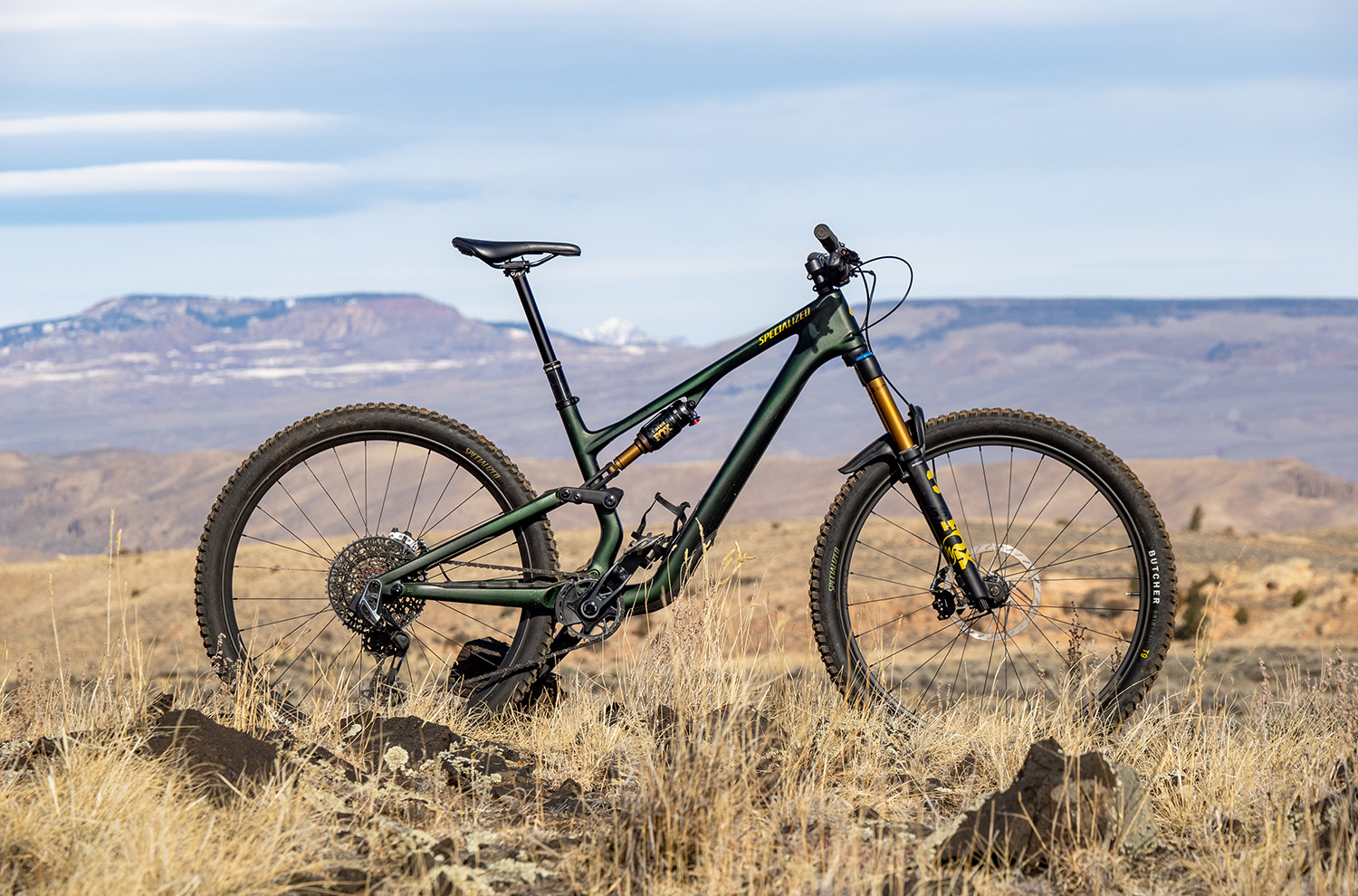
My first experience with SRAM’s Maven brakes was on this Stumpjumper 15, and they are another highlight of the “Pro” build kit. These brakes are very powerful and consistent, and are more than capable enough for the Stumpjumper 15. If anything, I sometimes found the Mavens to be a little too “touchy,” especially on loose-on-hardpack trail conditions, where squeezing a Maven lever a little too hard would result in an immediate skid.
At my weight of 160 lbs, these brakes weren’t responsible for decelerating that much mass, and smaller 180 mm rotors would likely be more appropriate for me on the Stumpy 15, but 200 mm is the smallest size rotor that can be run out back. On the other hand, I would imagine that heavier riders will be quite pleased with how the Mavens slow this bike down.
The carbon Roval Traverse SL rims on the Stumpjumper 15 Pro are a nice touch, and getting carbon hoops at the $8,000 price point is a nice deal these days. They felt precise and fairly damp for a carbon rim, and also stayed true throughout my entire time on the Stumpy. I also really enjoyed the tire pairing, with a Specialized Butcher up front and Eliminator out back, and I appreciate that Specialized opted for their softer T9 rubber compound for the front tire.
David: I’ll just add that I experimented with running a 160mm-travel fork (as will come stock on newer Evo-branded build kits going forward) on the Stumpjumper, as well as a higher-volume, non-Genie equipped shock (a Cane Creek Kitsuma Air).
I don’t have strong feelings about the fork travel one way or another. As you’d expect, the taller 160 mm fork makes the Stumpjumper a little more stable and calmer in how it handles. The 150 mm fork sharpens it a touch and makes the cockpit feel slightly roomier while standing up and descending, but neither difference is huge.
On the shock side, I think the Kitsuma is a good one, but its large-volume air can isn’t an ideal match for the Stumpjumper. I needed to run a lot of volume spacers to get the bottom-out resistance I wanted, which produced similar midstroke-support issues that I felt with the stock Genie shock before I added a bunch of spacers to its outer air sleeve. Again, the Genie shock worked well for me once I substantially reduced the volume of the outer sleeve, but the Stumpjumper (probably unsurprisingly) feels like it was designed around the relatively progressive Genie shock that comes stock, which is worth bearing in mind when considering aftermarket options.
We did, unfortunately, end up breaking the seatstay on our review bike under somewhat mysterious circumstances. When I received the bike from Dylan, it came out of the box with a crack in the stay; that crack wasn’t visible in the photos he took near the end of his time on it. It’s entirely possible that the damage occurred in transit, though the box was in great shape and there weren’t any signs of an impact in the area of the seatstay.
It’s hard to say whether the crack was the result of shipping damage or happened at the very end of Dylan’s time on the bike (he didn’t take any notable crashes on it). In any case, Specialized sorted things out, and I had no issues with the replacement seatstay.
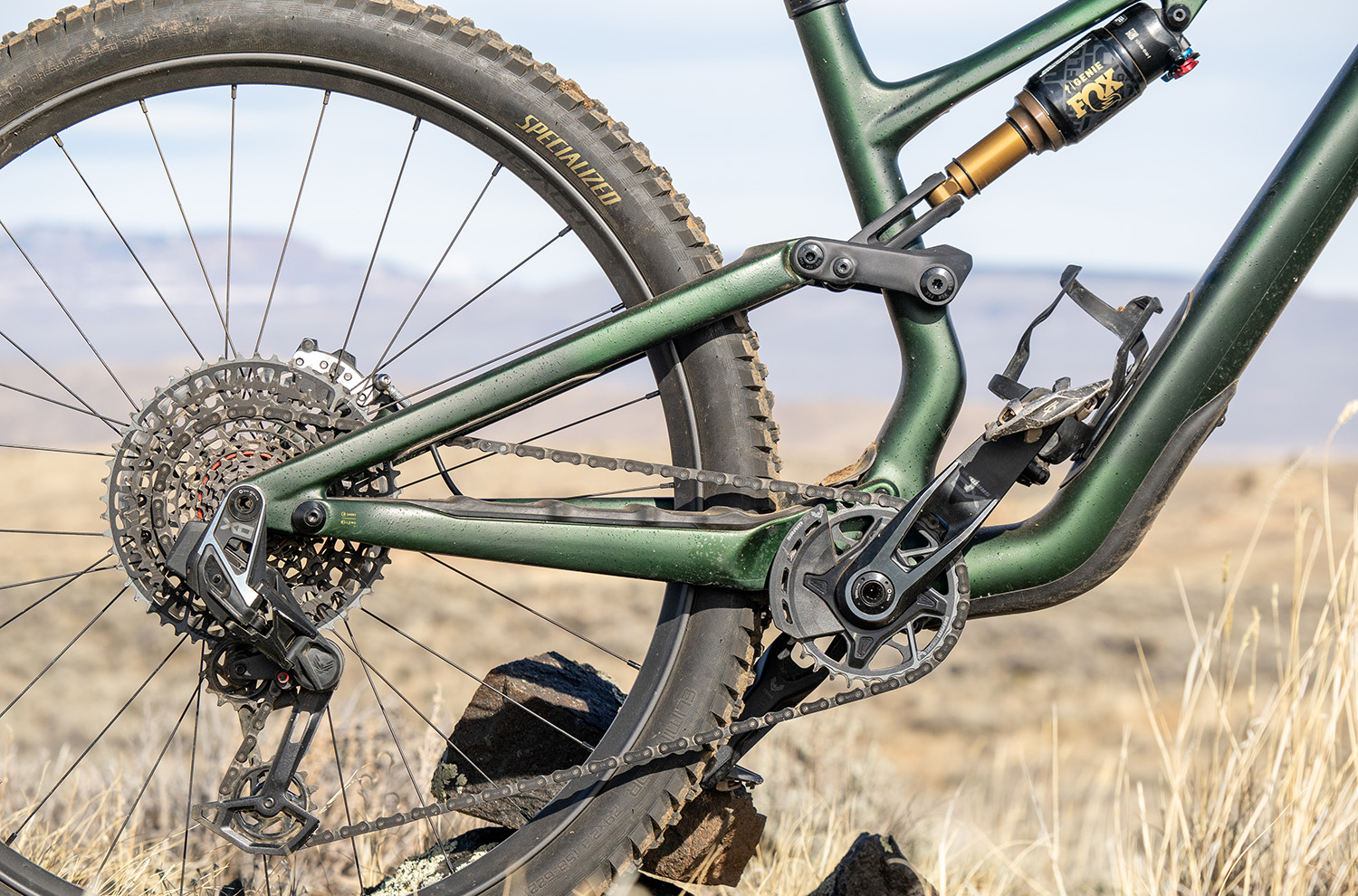

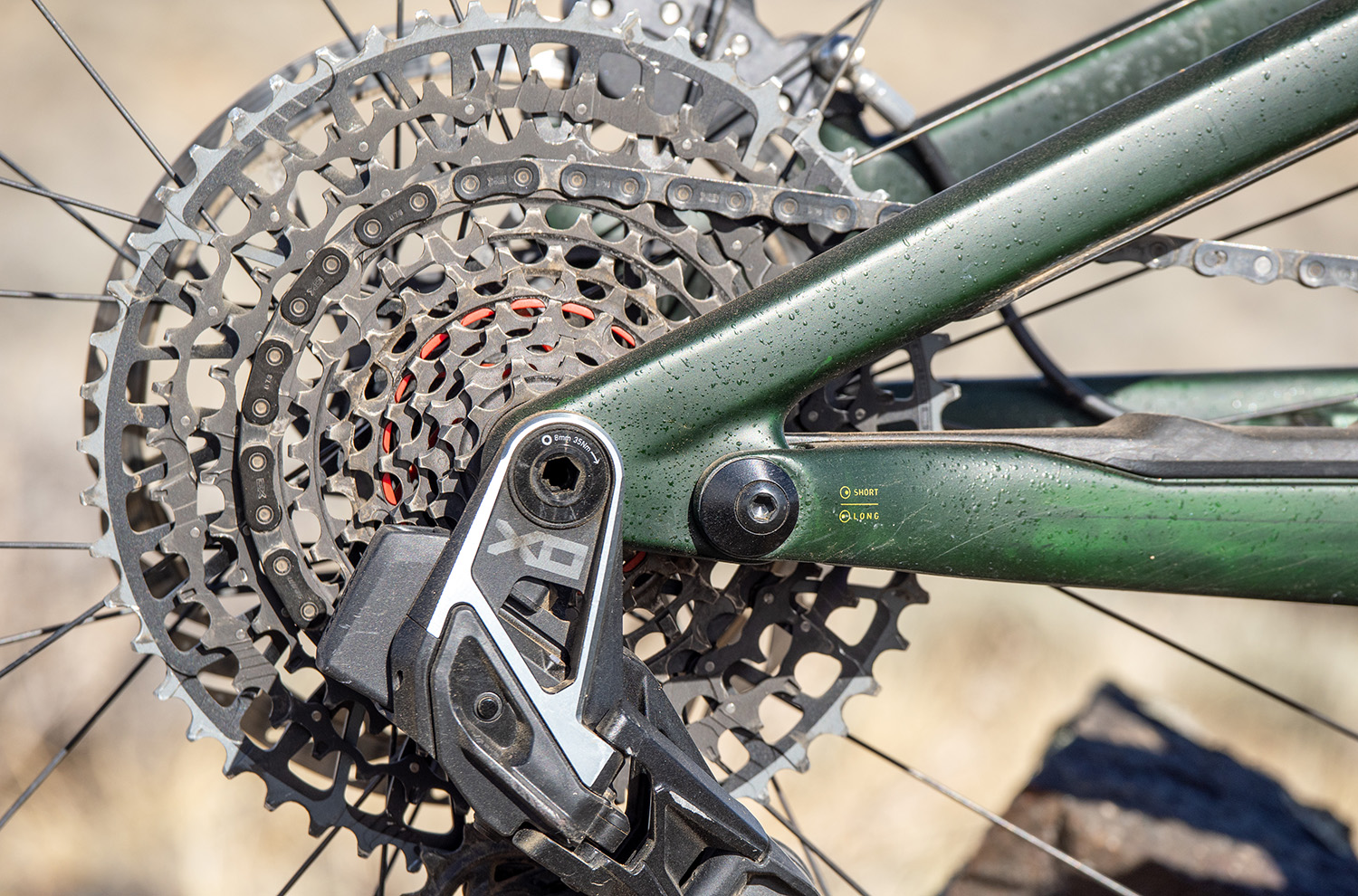
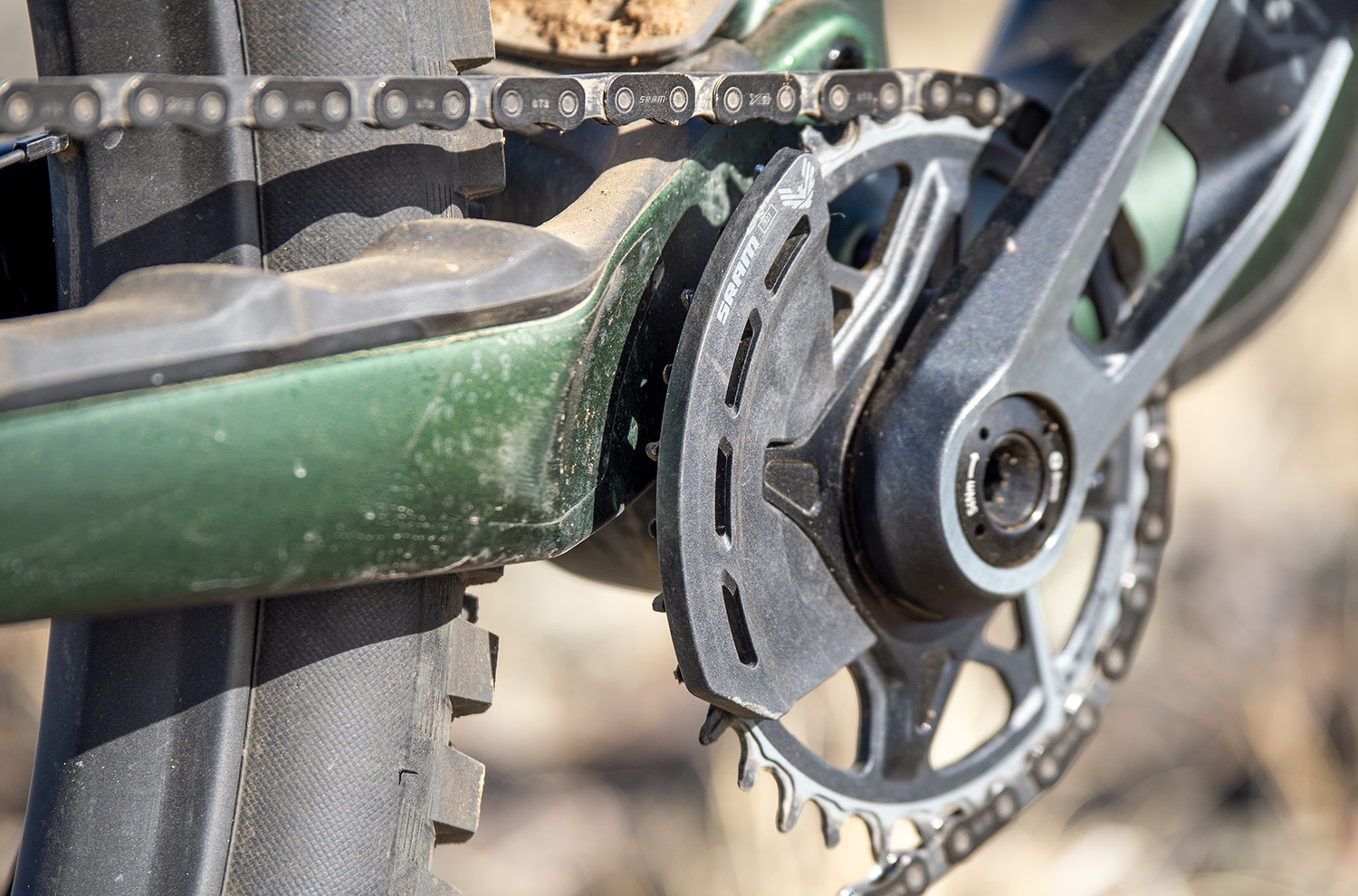
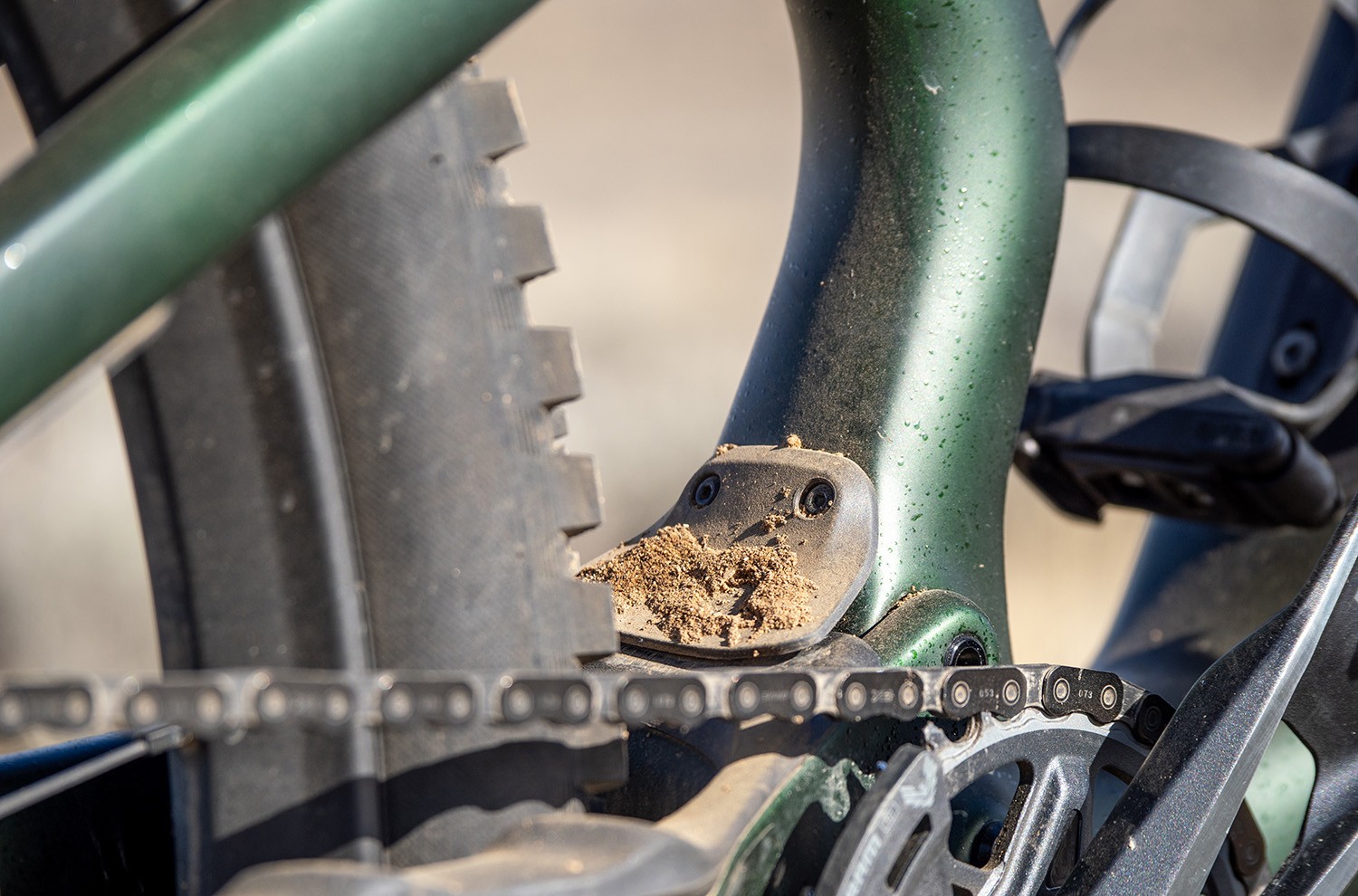
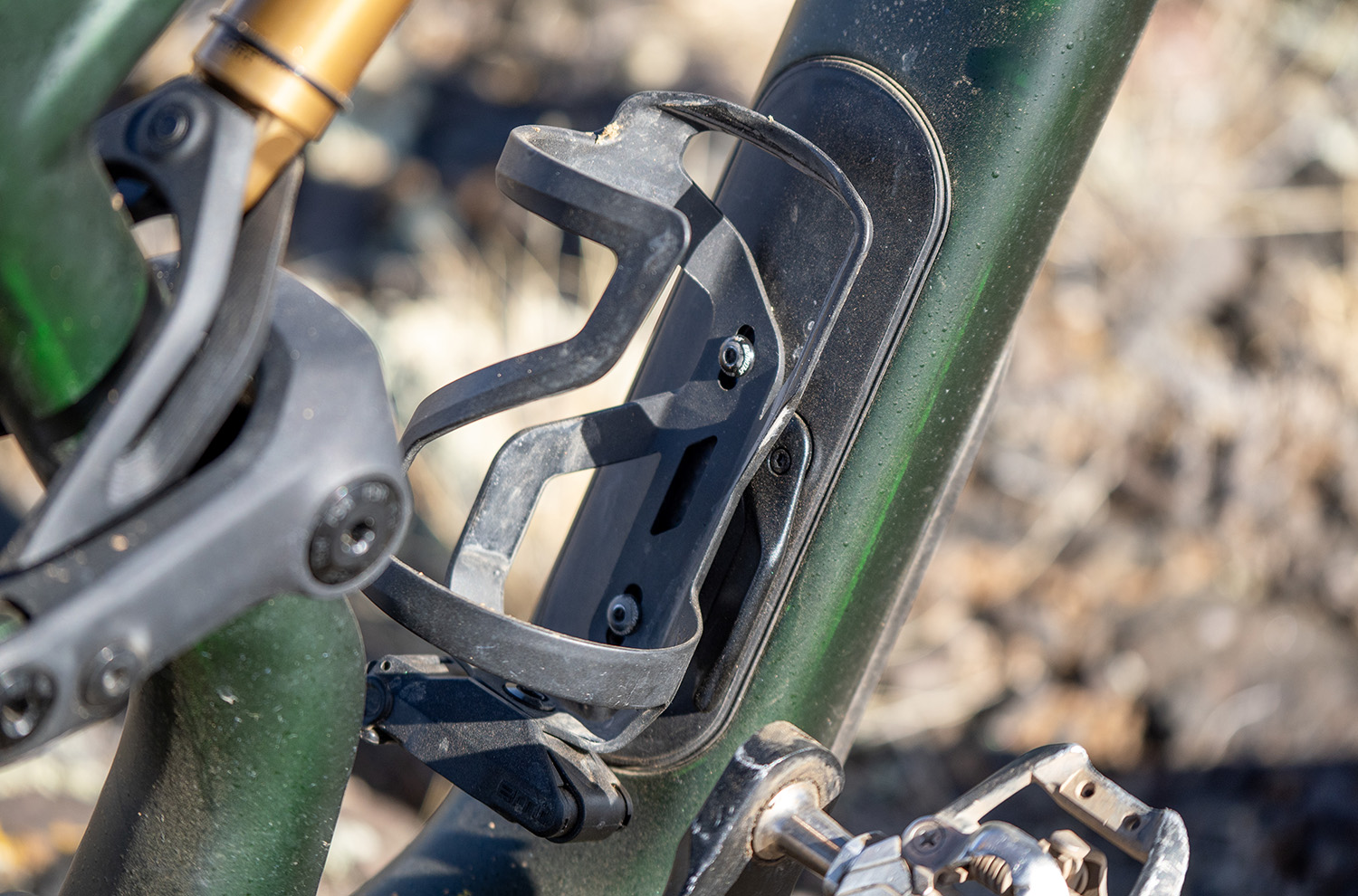
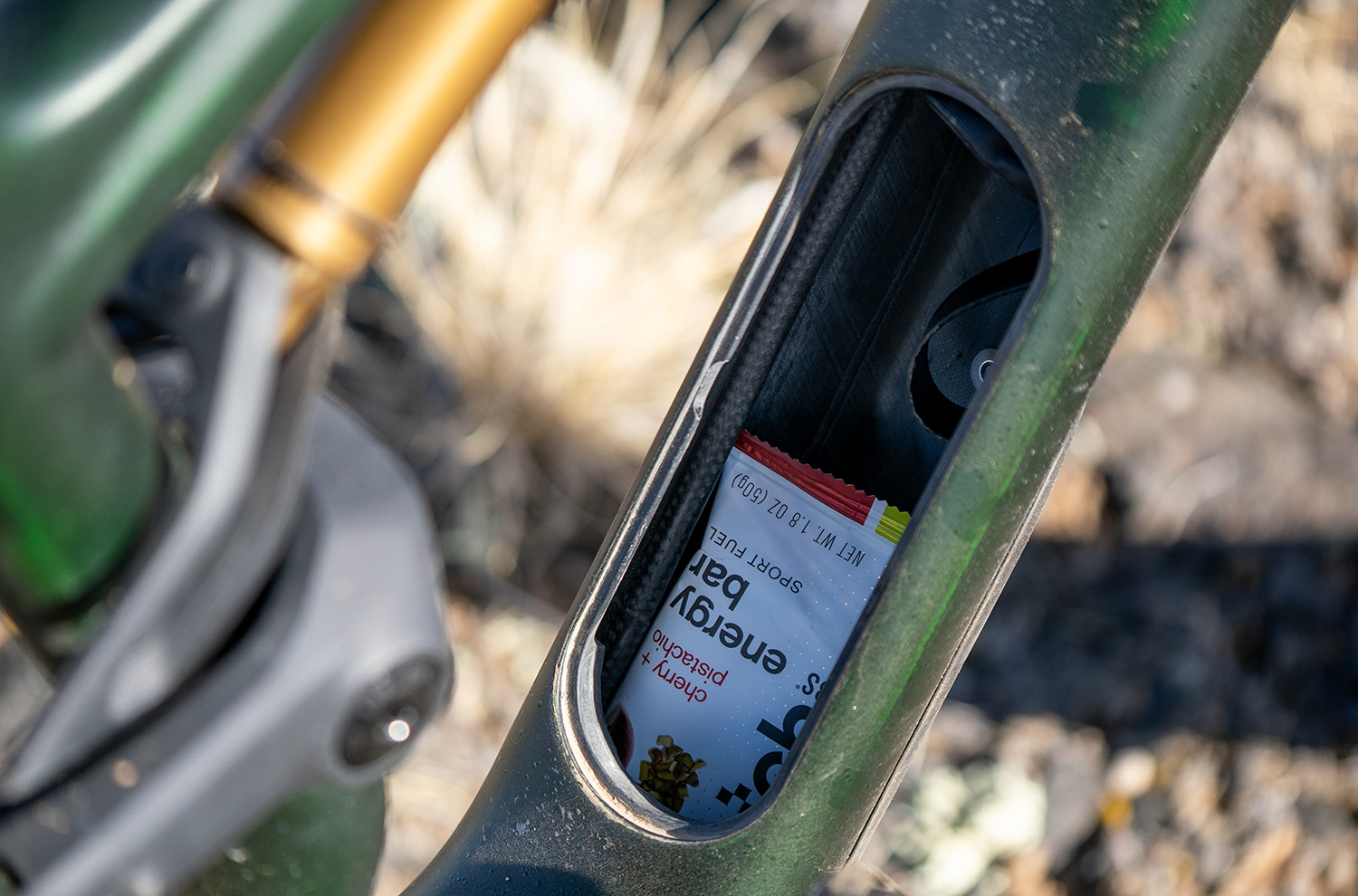
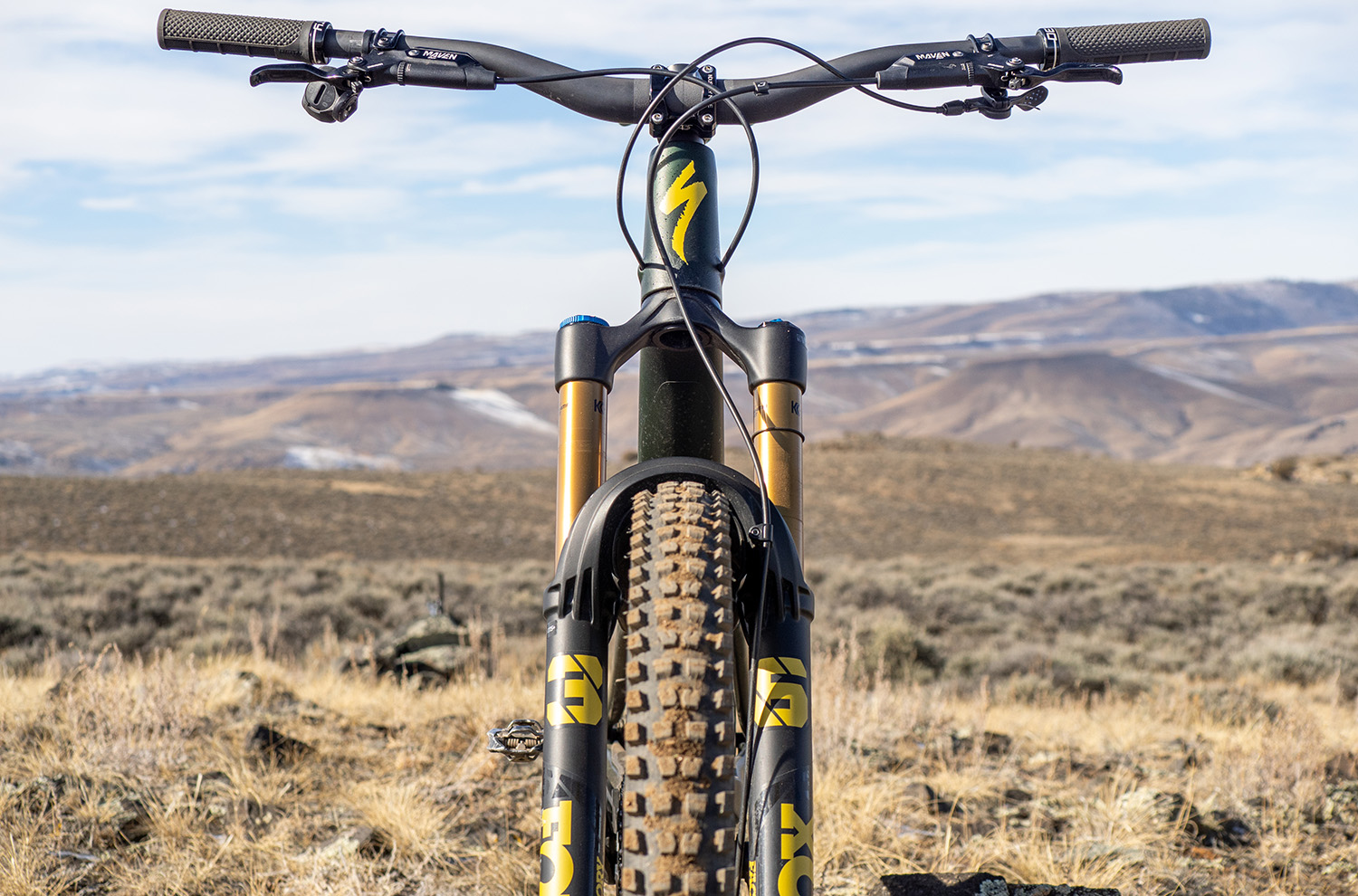
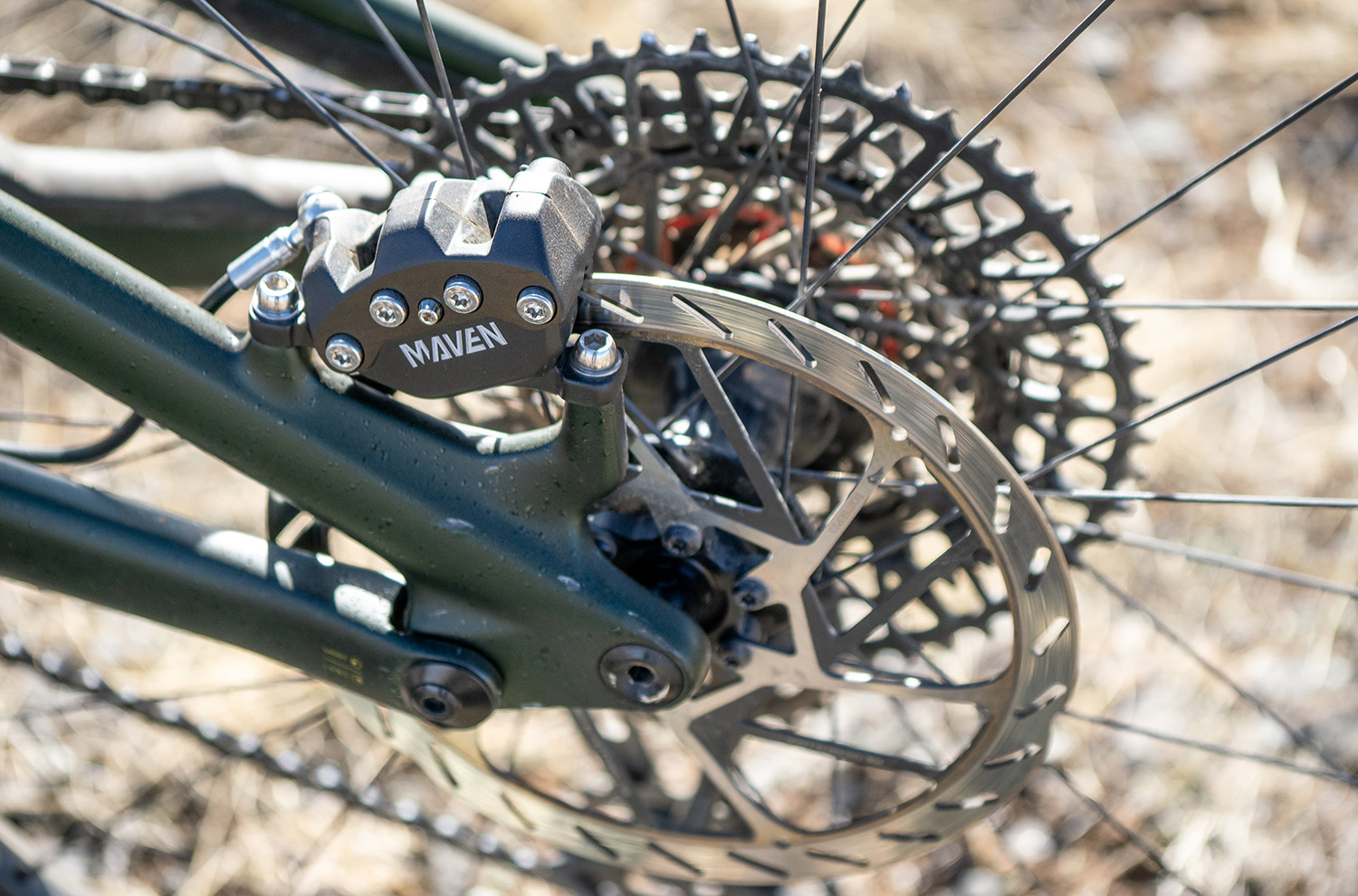
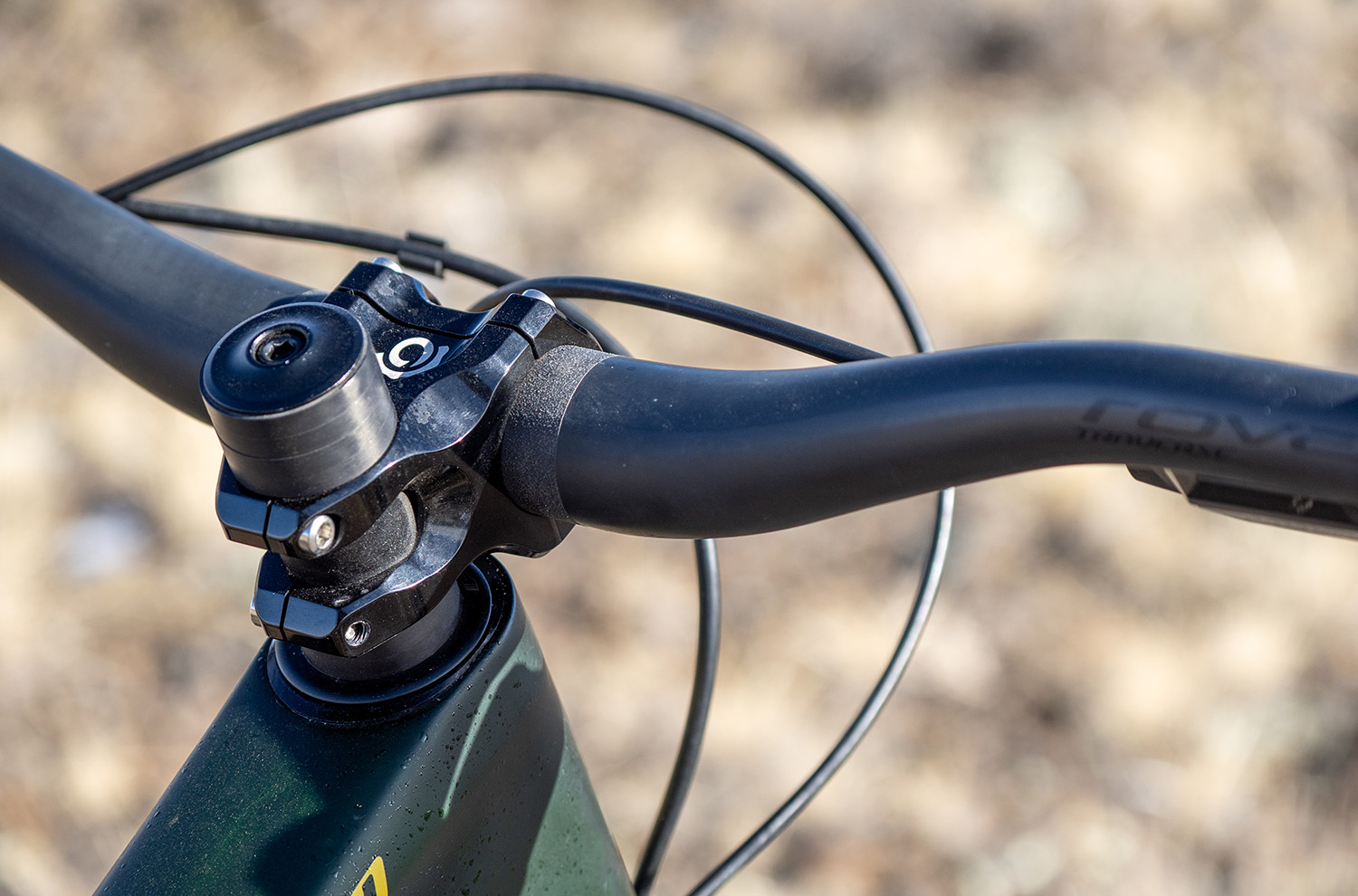
Who’s It For?
Dylan: Staying true to its roots, the latest Stumpjumper 15 is an impressively versatile Trail bike, and it’s quite difficult to make it feel out of place. Folks who mostly ride mellow XC trails and value efficiency over downhill performance are likely better off on something lighter with less travel, such as the Specialized Epic 8 or Epic 8 Evo. On the other hand, folks who want to prioritize downhill performance will find a more capable and forgiving ride in a more Enduro-focused bike, such as, well, the Specialized Enduro.
But, for folks who want one bike to do it all, or who ride a trail system with a wide variety of trails, the Stumpjumper 15 is an excellent choice. It feels thoroughly modern and capable, and its Genie rear shock makes it stand out in the crowded ~150 mm Trail bike category.
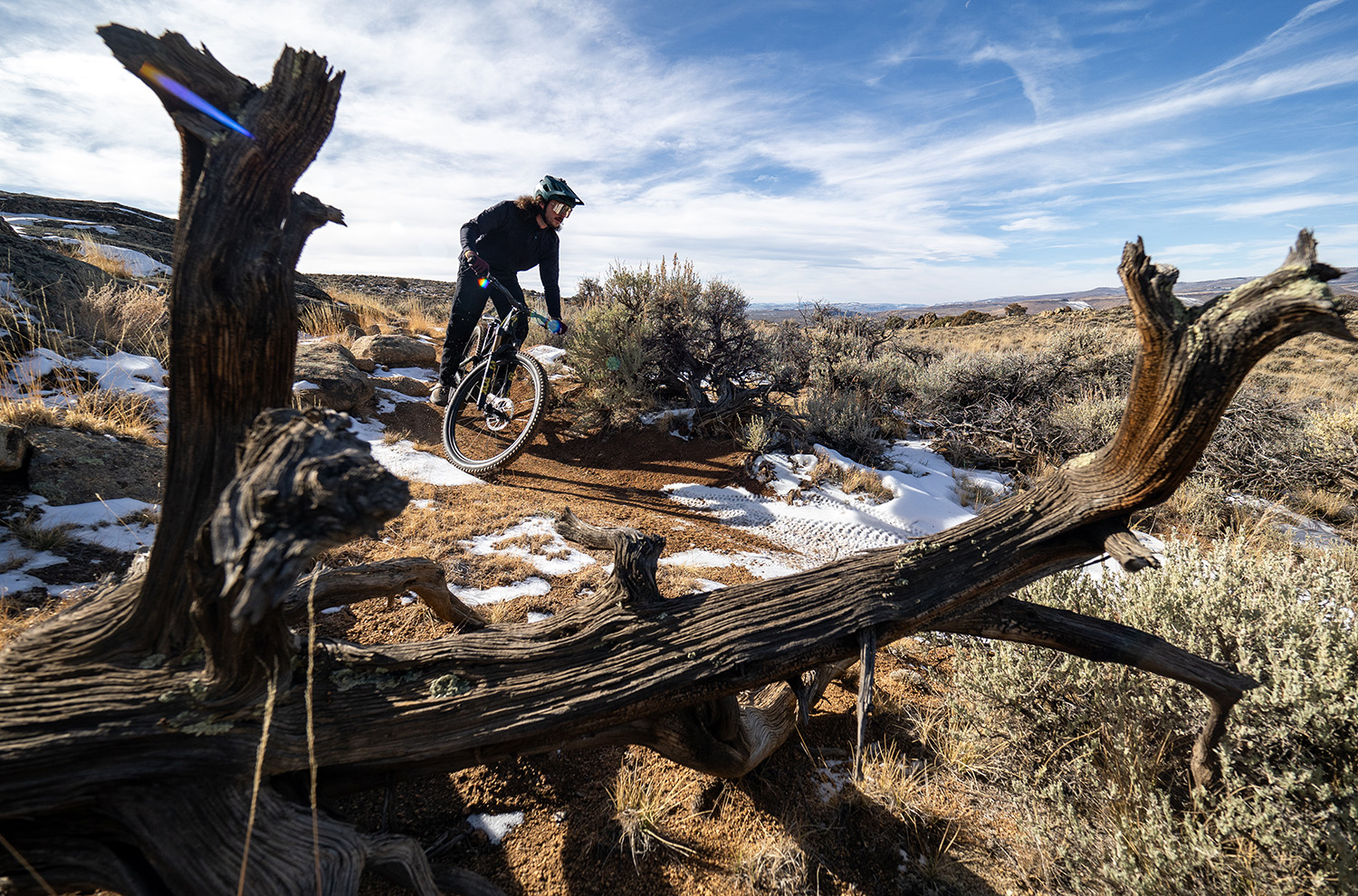
Bottom Line
The Specialized Stumpjumper 15 stands out for its versatility first and foremost. It’s a bike that’s at home on a wide range of trails, and while there are plenty of bikes that do certain specific things better, few cover as many bases as effectively. Compared to a lot of other bikes that we’d also laud for their versatility, the Stumpjumper 15 is a touch on the more lively, efficient end of the spectrum overall, but it’s quite adjustable and adaptable. It’s a bike that we can imagine a wide array of riders getting along with.
Deep Dive Comparisons
BLISTER+ members and those who purchase our Digital Access Pass can check out our Deep Dive comparisons linked below. Get our Digital Access Pass to view all our Deep Dives and Flash Reviews, or become a BLISTER+ member today to get access to that and a LOT more, including the best worldwide Outdoor Injury Insurance, exclusive deals and discounts on skis, personalized gear recommendations from us, and much more.

Deep Dive: Specialized Stumpjumper 15
We compare the Specialized Stumpjumper 15 to the previous Stumpjumper EVO, Santa Cruz Hightower 4, Ibis Ripmo V3, Santa Cruz Bronson 5, Yeti SB140, Cannondale Habit, Spot Mayhem 140, Transition Sentinel V3, Kona Process 153, and Norco Sight.
Blister’s Flash Reviews and Deep Dives are accessible to those who purchase one of our paid subscriptions
To get our comprehensive Deep Dives and our initial, unfiltered reports on new gear, become a member and receive many other services, deals, and discounts.
If you’re already an active member, please log in.
(If you’re already logged in and a member in good standing and seeing this message in error, please refresh this page in your browser.)

Does the frame have the ability to take a mechanical drivetrain with internal cable routing or is this fully setup for electric shifting? I much prefer the gear spacing of Shimano drivetrains.
No provision for a mechanical derailleur. SRAM T-Type has more than a few, shall we say, challenges, but at least they addressed the gear spacing in the lower ranges. But SUCH slow shifting. Argh!
Gotta say, though I’m not a big fan of proprietary rear shocks, this Genie thing is getting really good initial reports. Let’s see what everybody is saying after six months.
Here’s what I would do if I were pondering buying this bike: buy the Stumpy 14 frameset at a KILLER price and build it with a 140 piggy back shock and 150 fork you’re welcome. I ride this now and it slays. Plus its build size allows me to have a super capable TRAIL – not XC, not enduro – bike and add an actual more downhill-oriented bike to the quiver later. There is no “one bike to rule them all.” The quiver can’t be killed! Ha
Srm are you running the piggyback on an Evo frames or the non-evo? If non-evo what size shock?
Specialized, turning on the non standard equipment switch again? It’s a bold move Cotton! Considering the market is currently flooded with 2023 inventory, we’ll see how well this genie floats!
So the big question is: will there be an evo model? Indeed, they don’t say so now, but that doesn’t mean they won’t release it in the future.
Although, historically most Evo versions of Spesh bikes, have had only spec, or perhaps a different rocker link, not a whole different frame. With the upped travel, I would not expect to see a different frame, but where are the Evo builds with a reservoir shock and such?
With the Alloy version now available, there are two builds (Ohlins Coil and Alloy Fox Coil) that satisfy that gap that the Evo used to fill. While there’s always a possibility of an Evo version coming down the line, the inclusion of these coil models seems to hint at the Evo disappearing from the lineup.
Can I install a Genie Shock on my 2023 Stumpjumper Pro?
The prior-gen Stumpjumper uses a 190×45 mm shock and the new one goes up to a 210×55 mm one (or 52.5 mm stroke, in the case of the S1) so not for the time being.
I’m confused how a frame that’s tuned to the progression and bottom-out support of a genie shock is supposed to be even betterer (and more expensive) downhill with a linear coil shock? Surely the frame’s kinematic is built to one or the other, particularly with such a distinctive air shock? If the air stock’s tagline was ‘feels like a coil’ à la Vivid I’d get it, but that’s not what the Genie detail says.
The idea of a mini enduro sled with 38 forks sounds cool though. And the full RRPs seem reasonable.
Spot on. The marketing claims and “tech” explanation for this bike from Spec are ridiculous. It has a very linear/non-progressive compression curve which should mean the only coils that will be rideable are the Cane Creek Tigon or one with a progressive spring. Even with an air shock, I’m very skeptical of the Genie approach. It should lead to a bike that wallows in the mid travel. This will make it feel plush, with the end stroke ramp up preventing bottom out, but it will also feel sluggish, and doesn’t give the damper much room to actually absorb bump energy. That sounds to me like a bike that is comfy for slow riders but not actually performant for anyone fast. Also sounds like it’ll be bogged down on the climbs.
Contrary to the Manitou, Ohlins, and EXT dual positive air chambers which *increase* air volume later in the stroke to create linearity and let you run initial volumes and pressures that support the midstroke, this Genie does the opposite, decreasing volume at the end. That means a high initial volume that reduces midstroke support and then “catches” at the end with a ton of progression. I’m very skeptical.
I’m a bike rider and I’m trying to find out more information about your experience
Cascade making the high pivot conversion kit trying to make this thing a V2 Druid tells you everything.
> “getting carbon hoops at the $8,000 price point is a nice deal these days”
This is an insane sentence to read, regardless of its validity